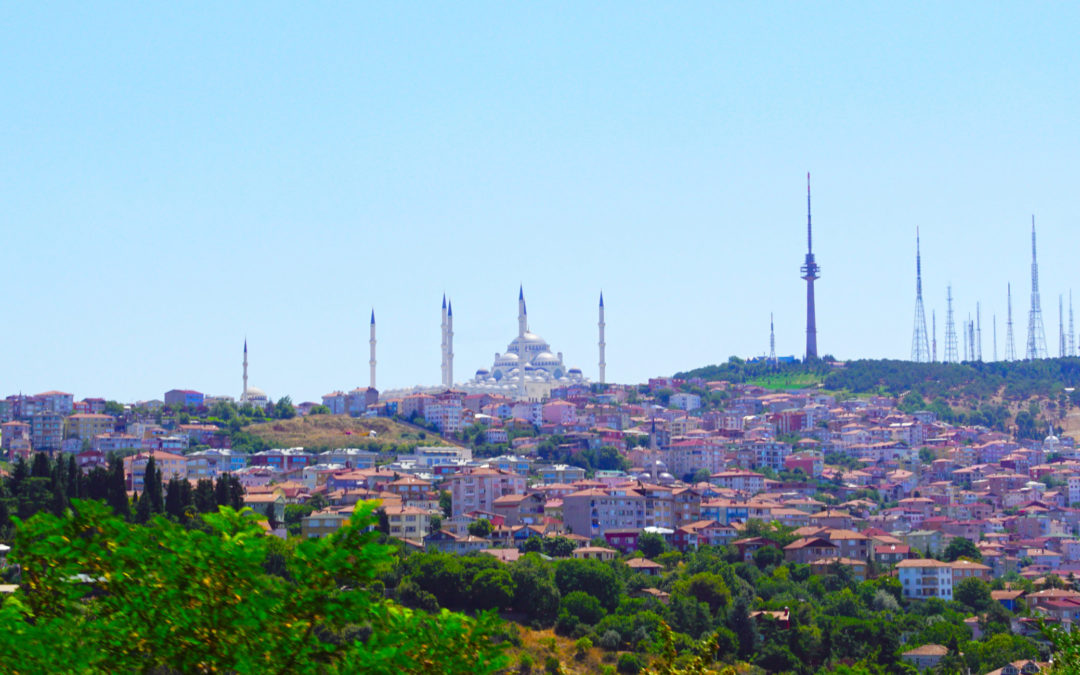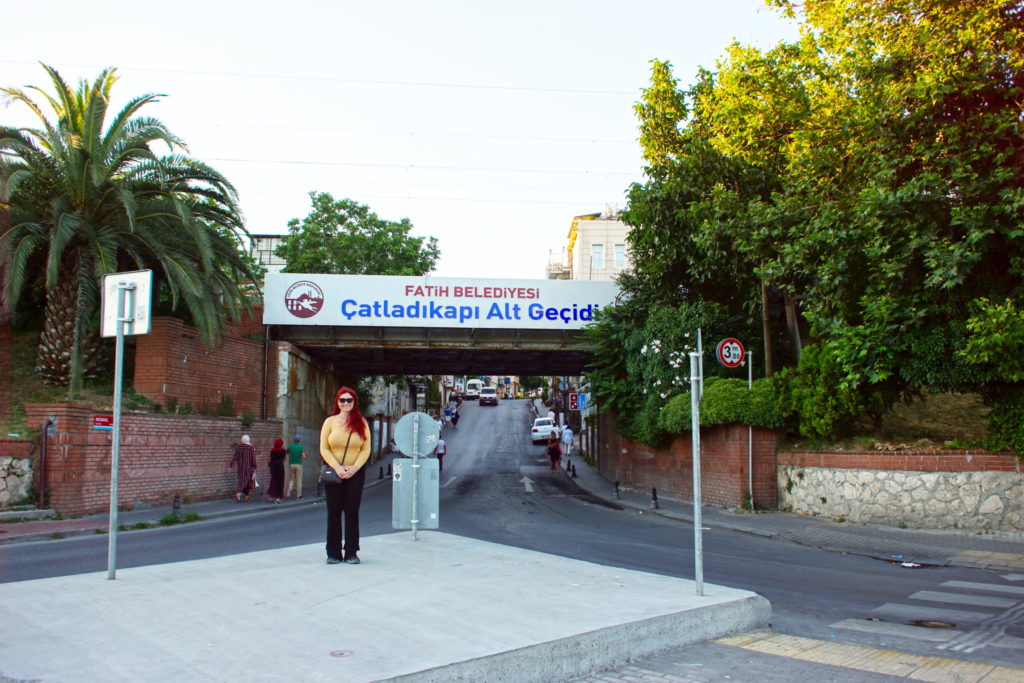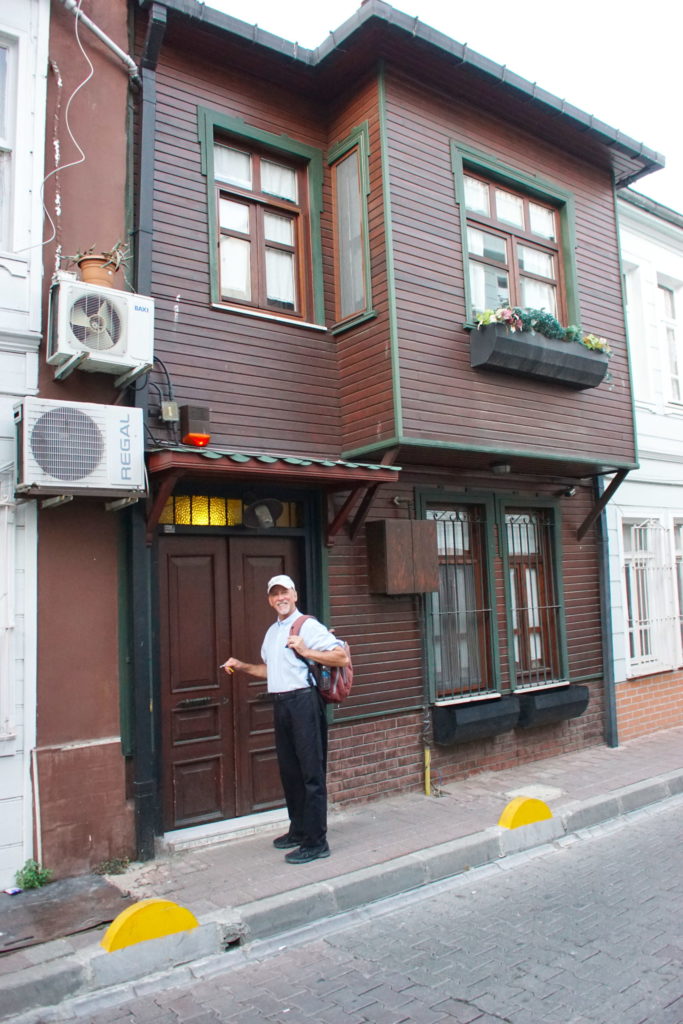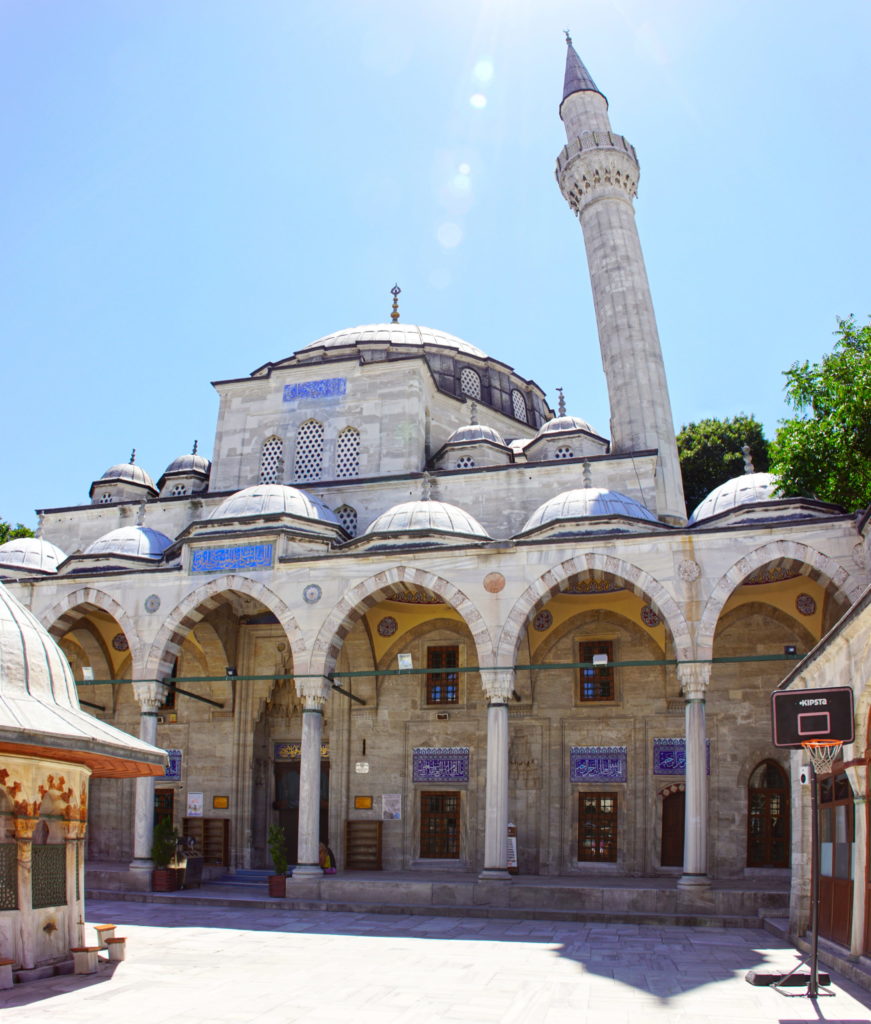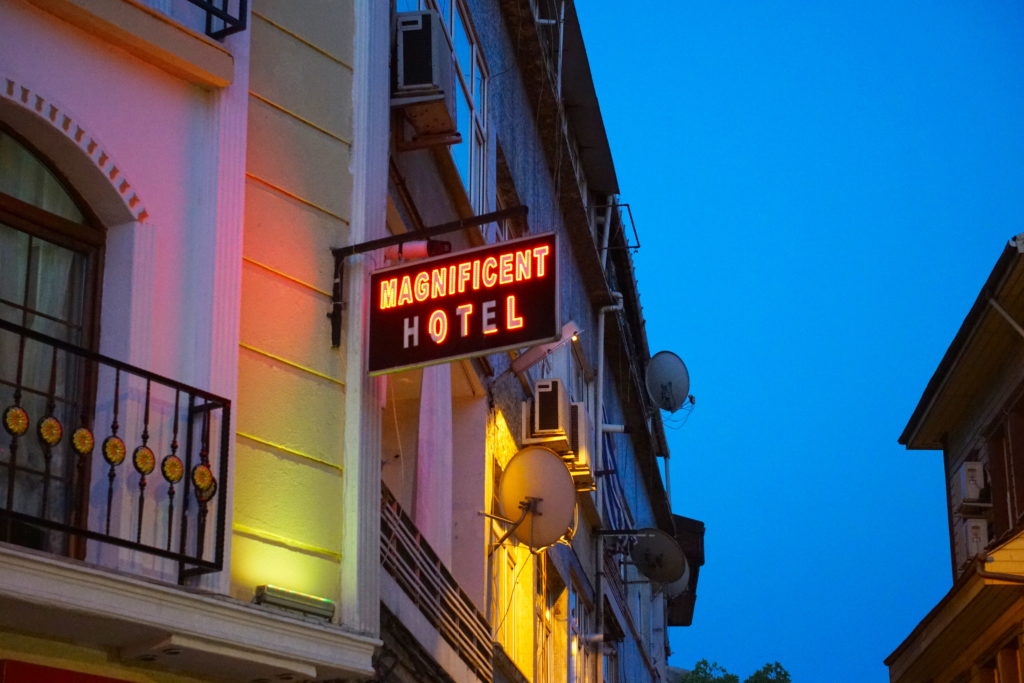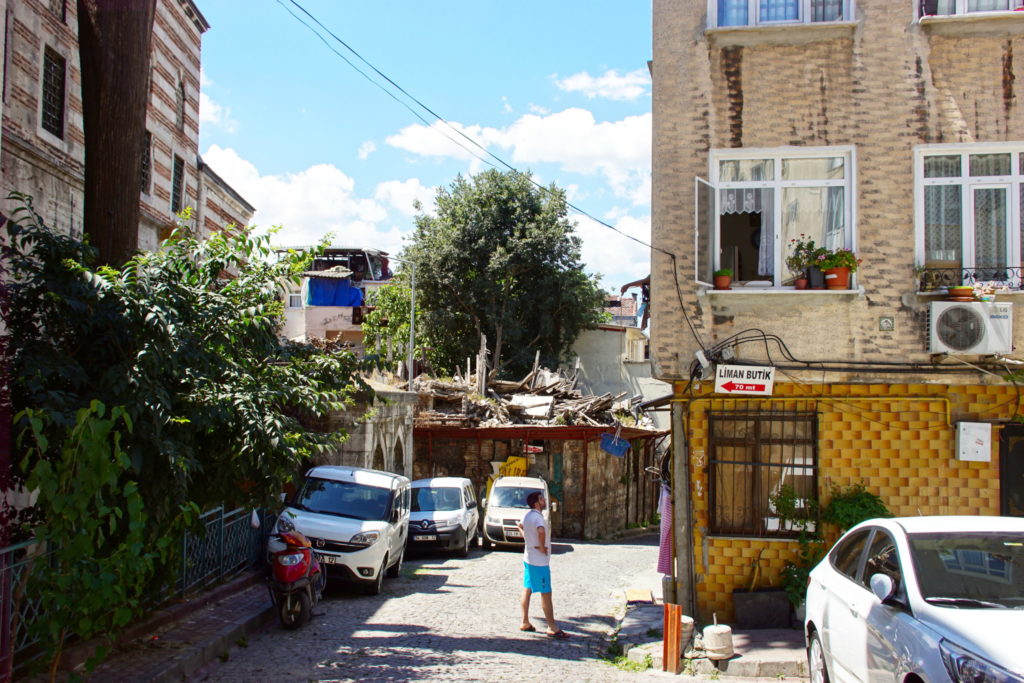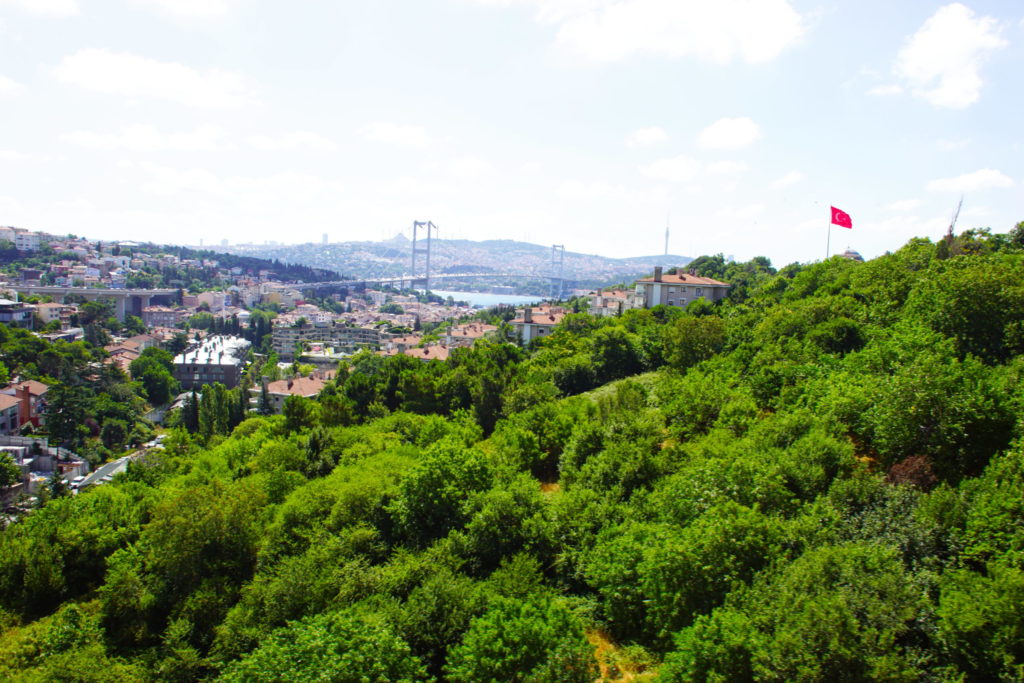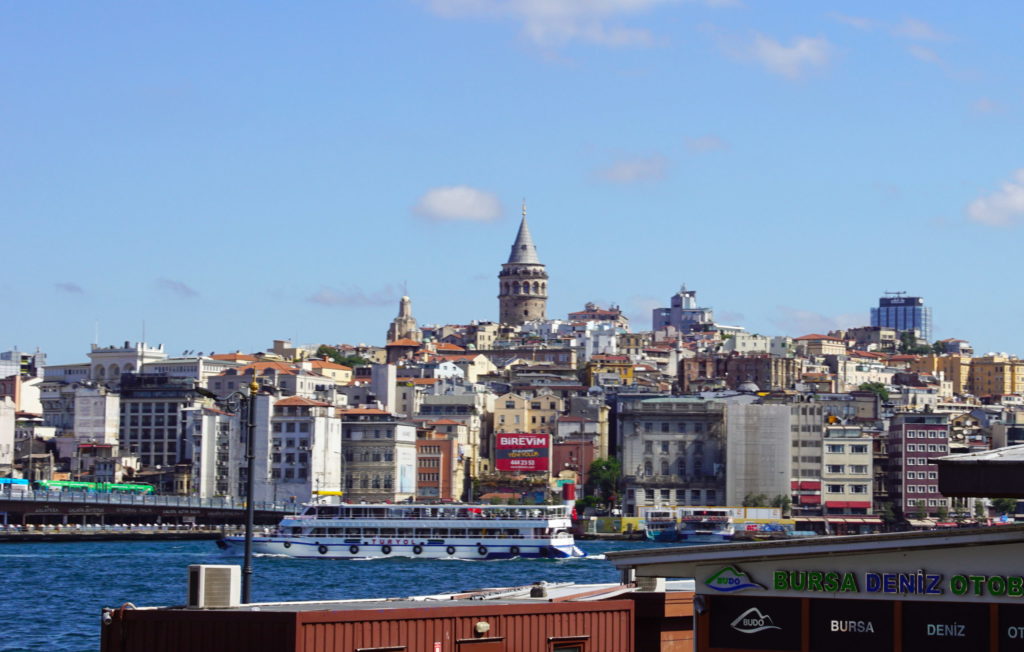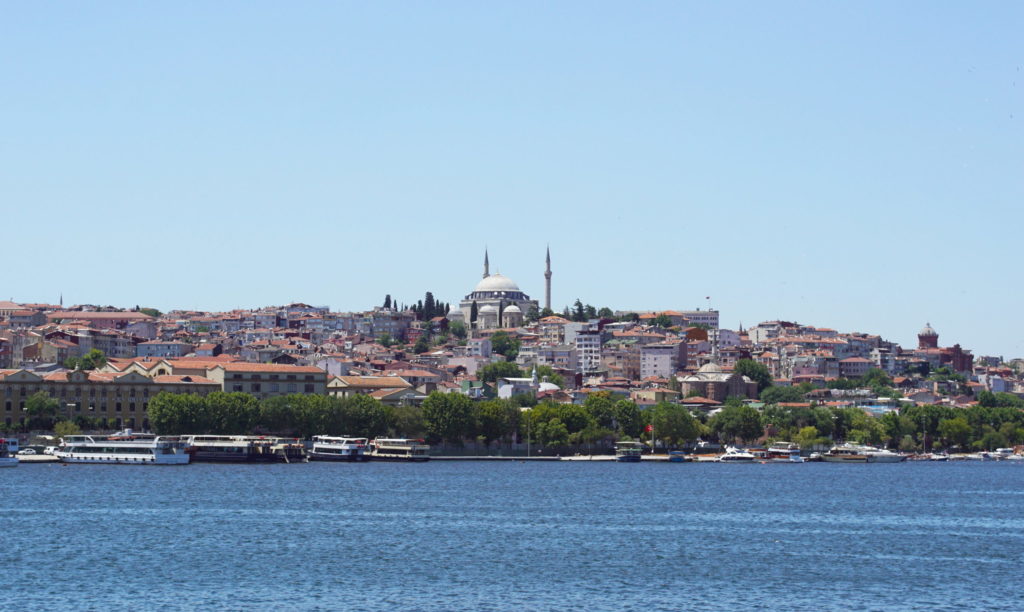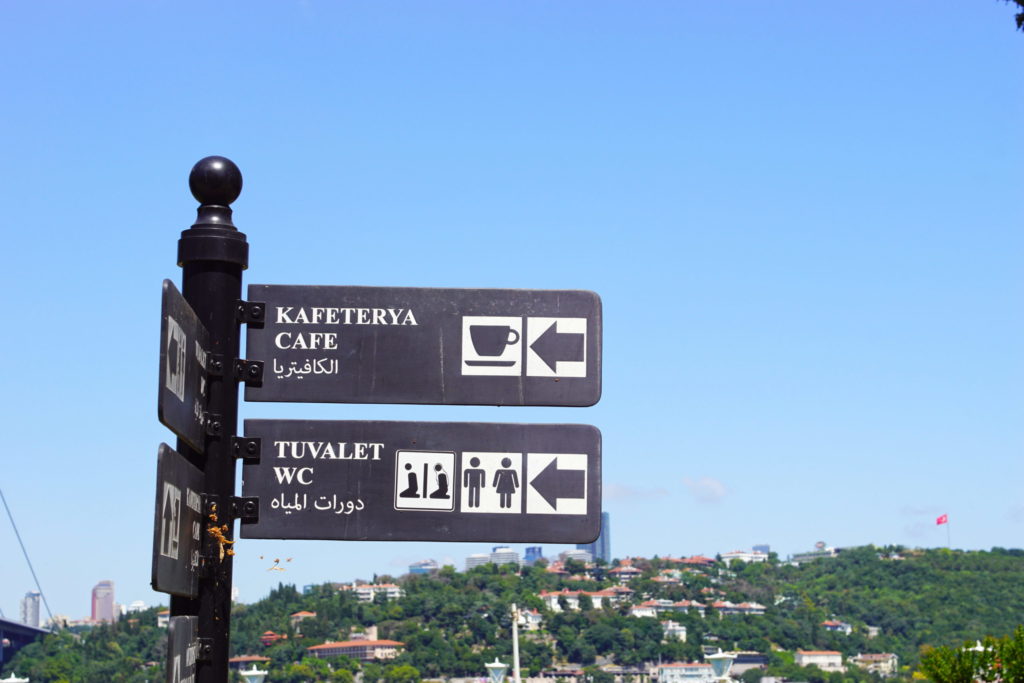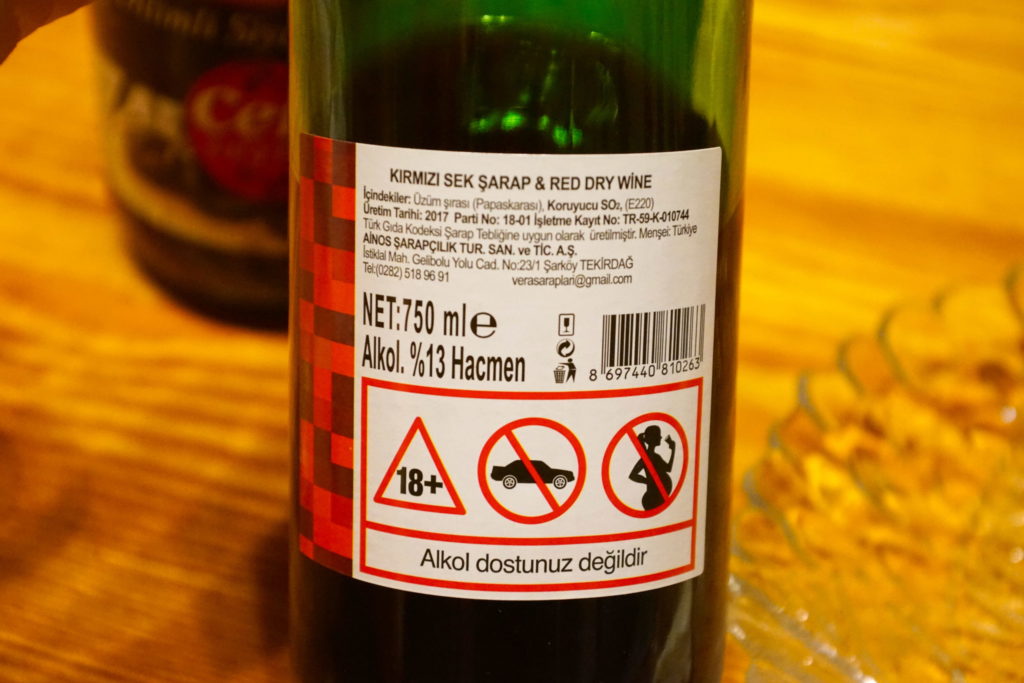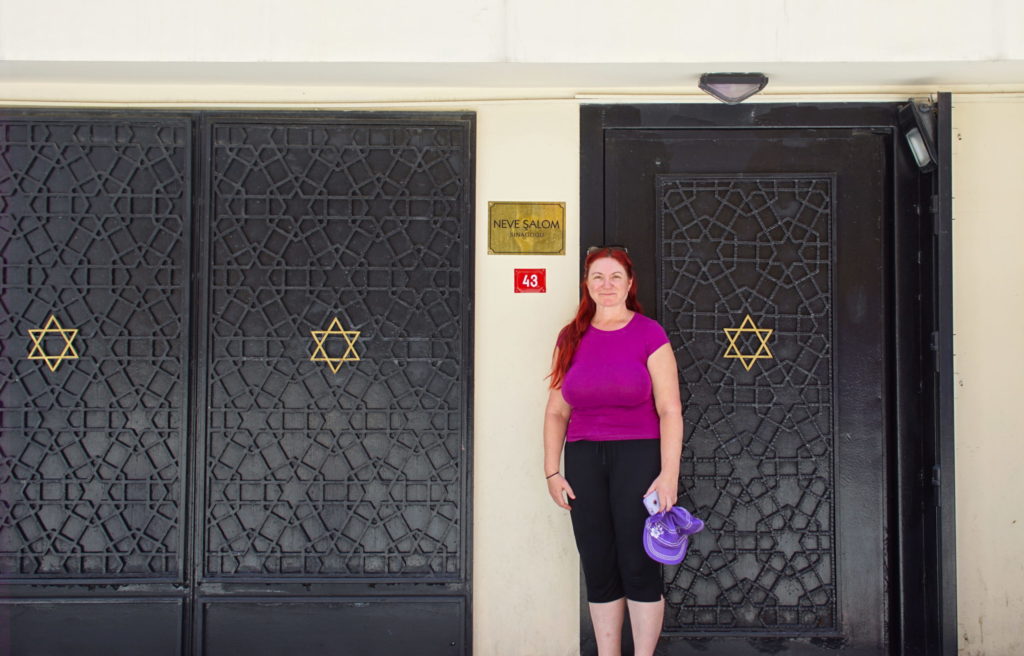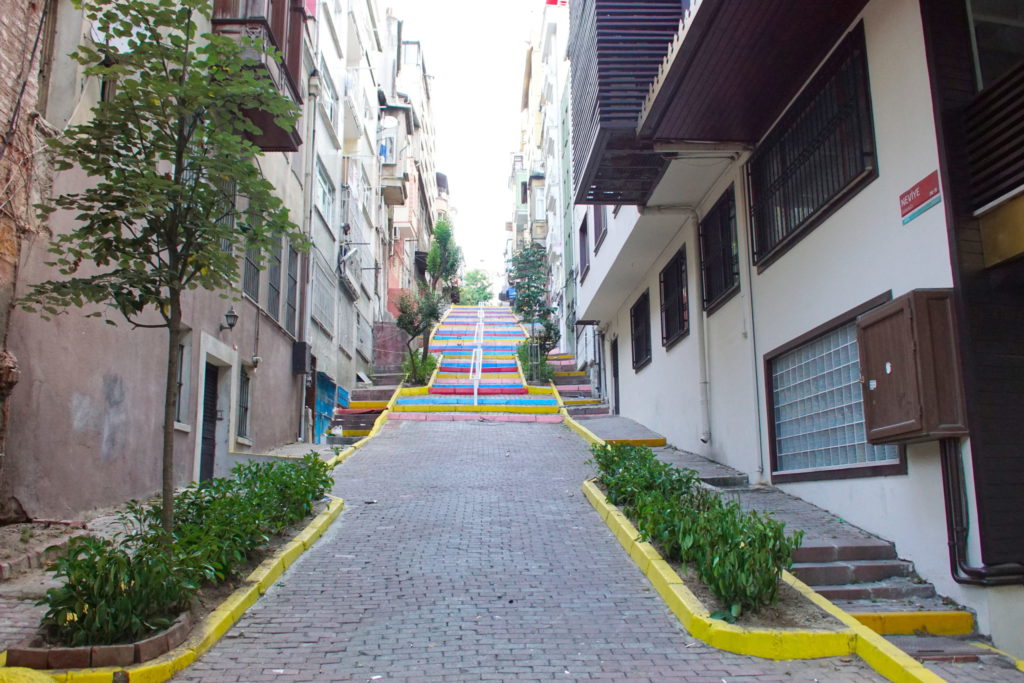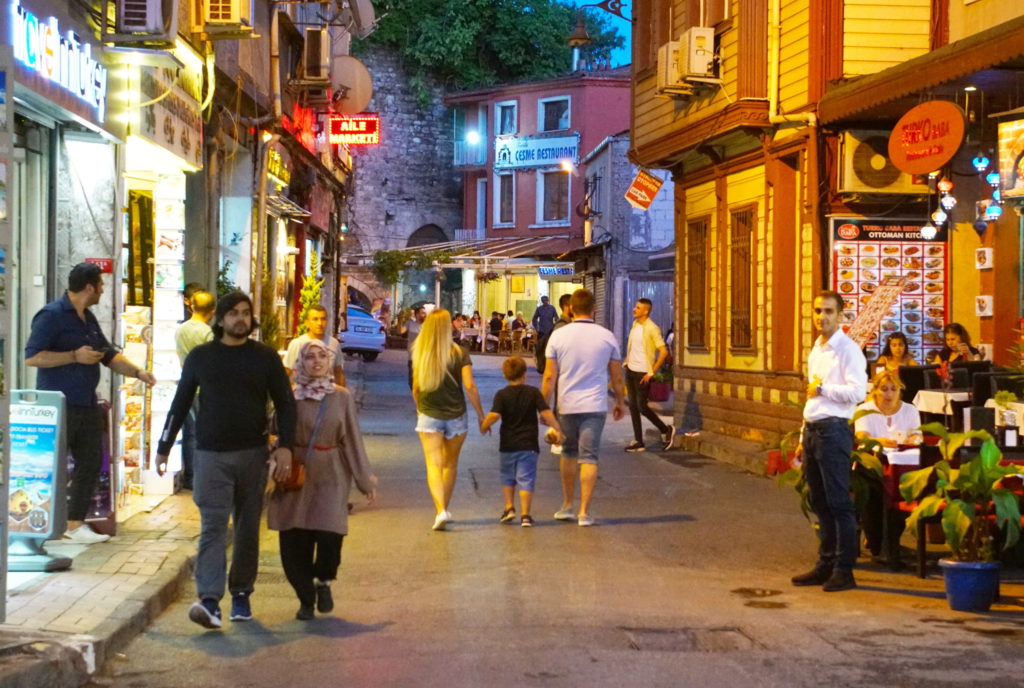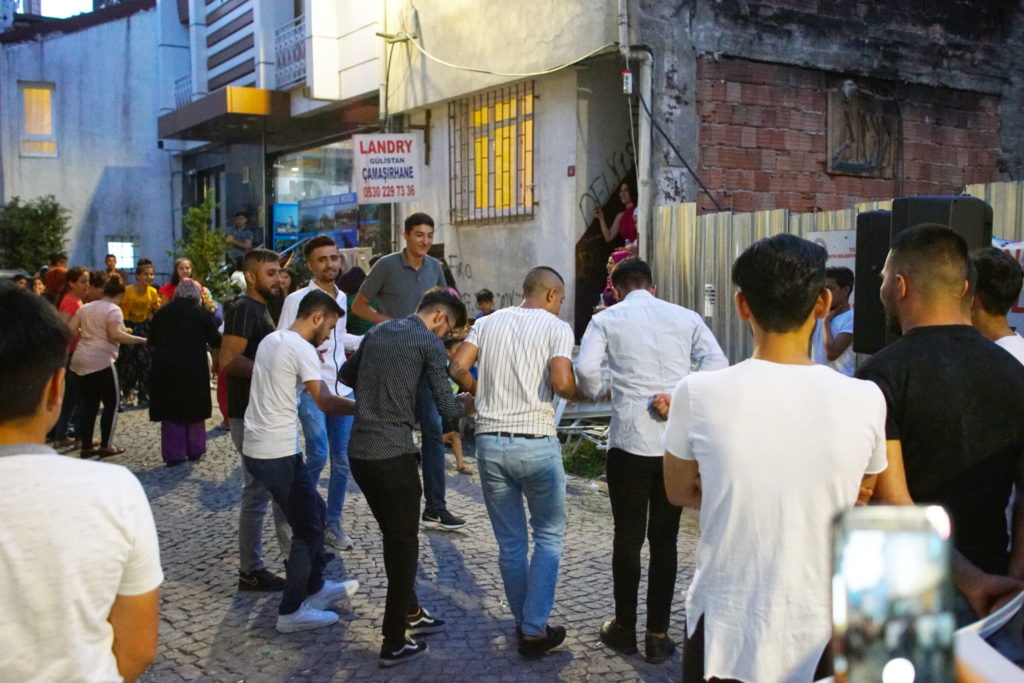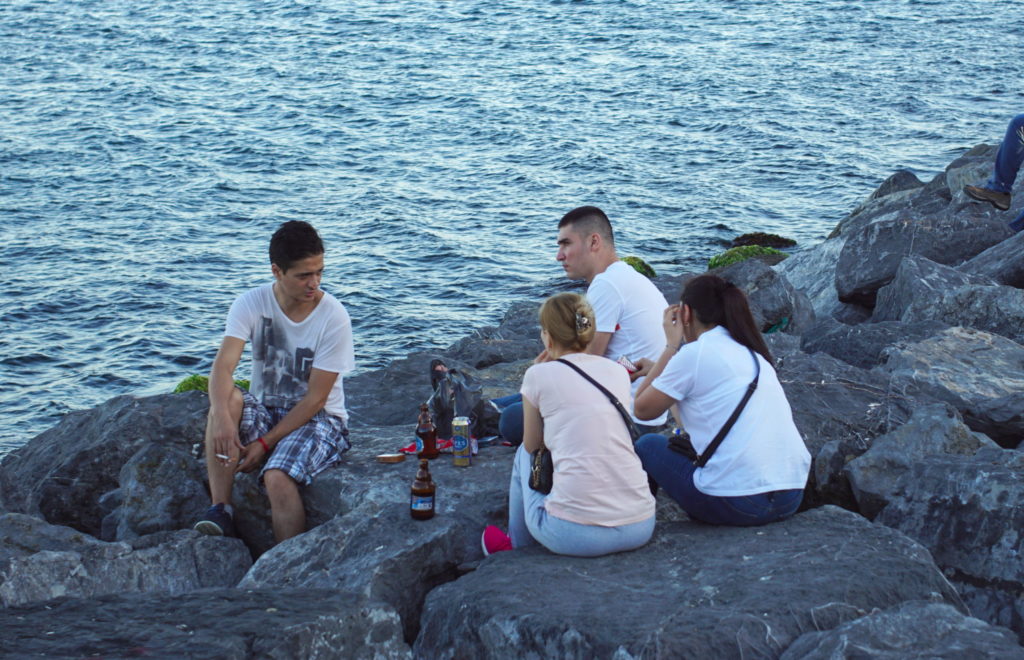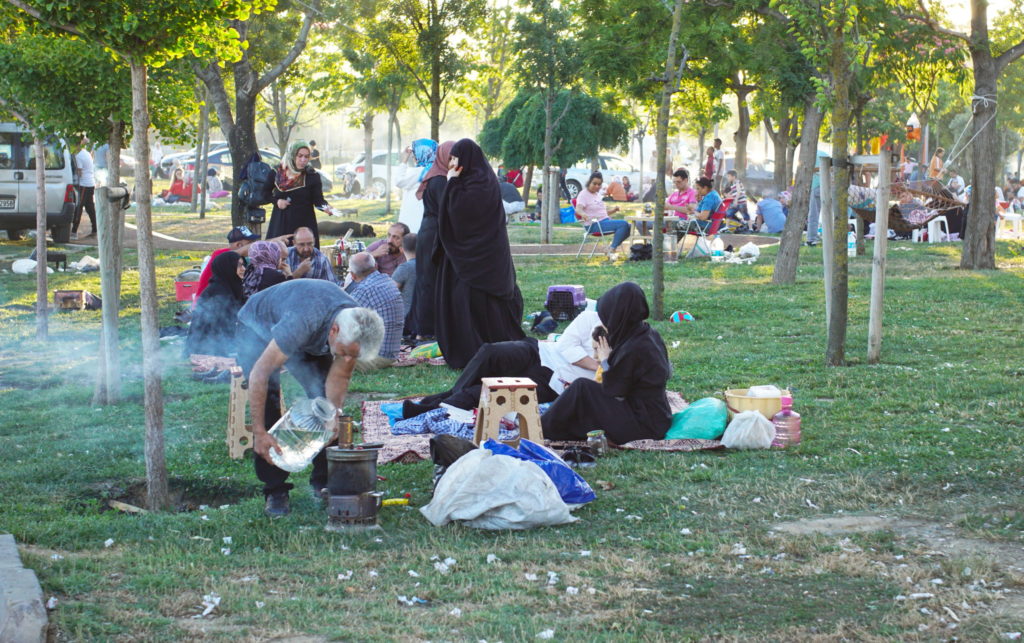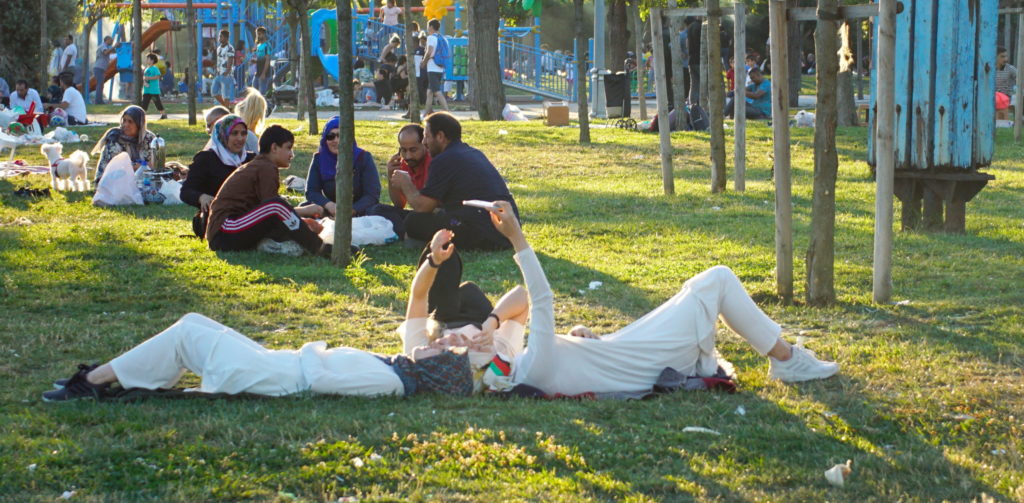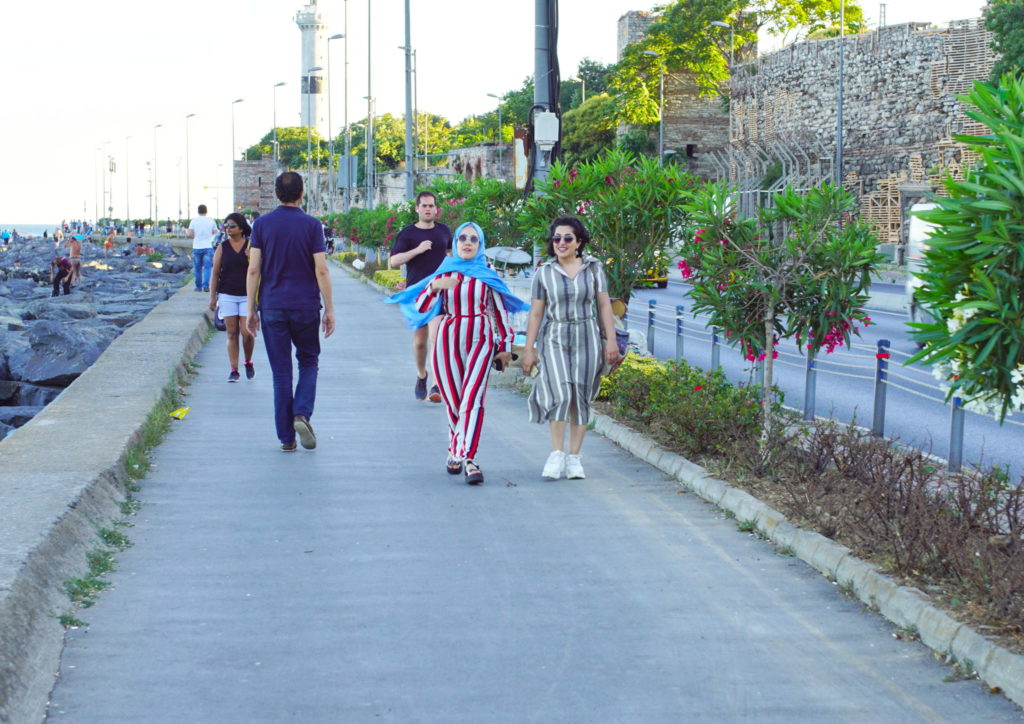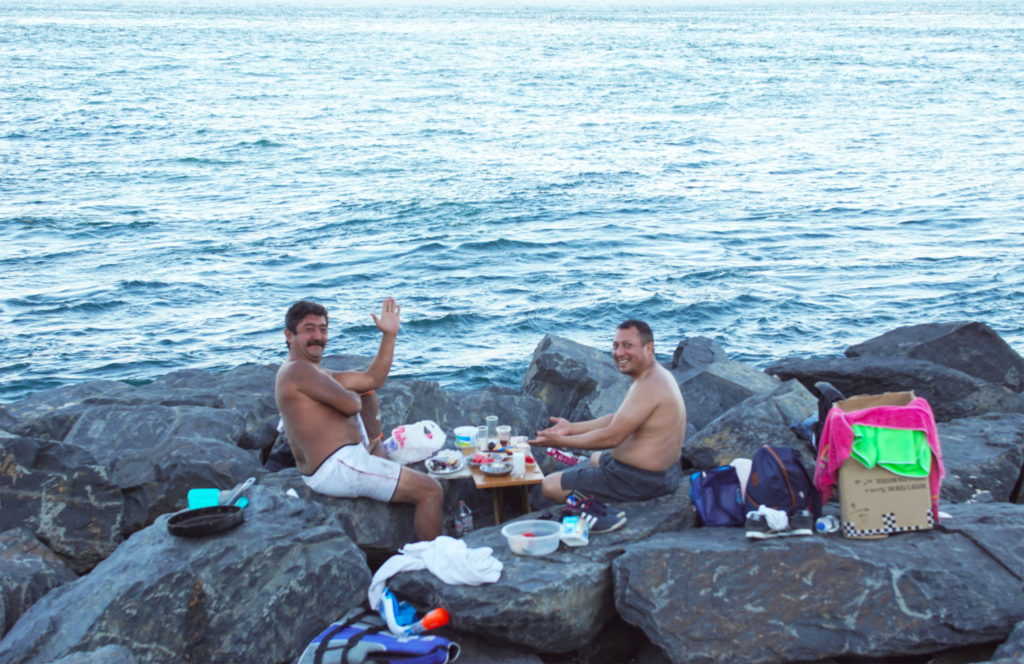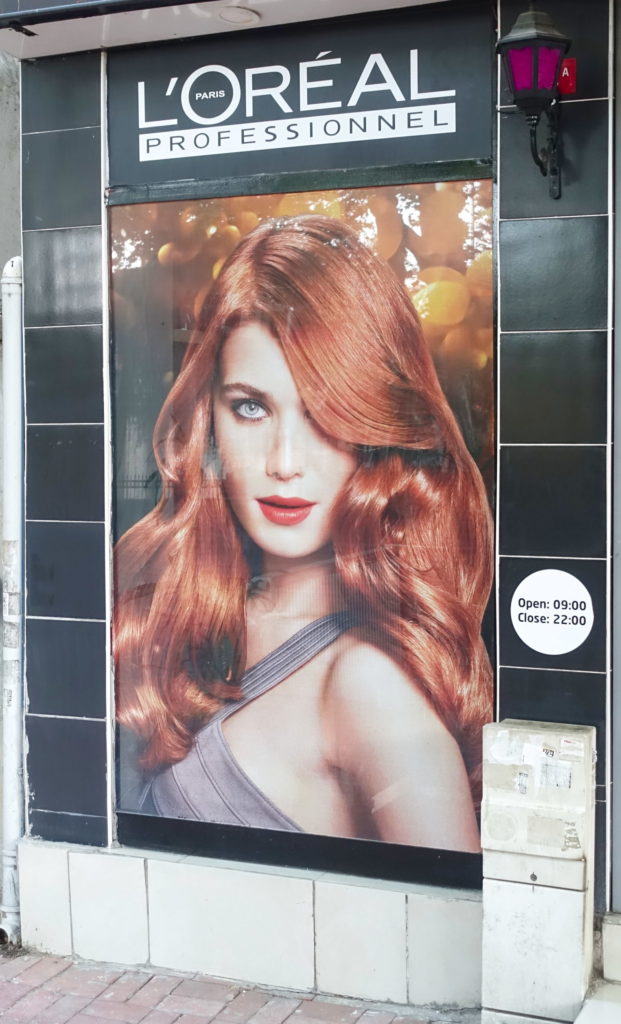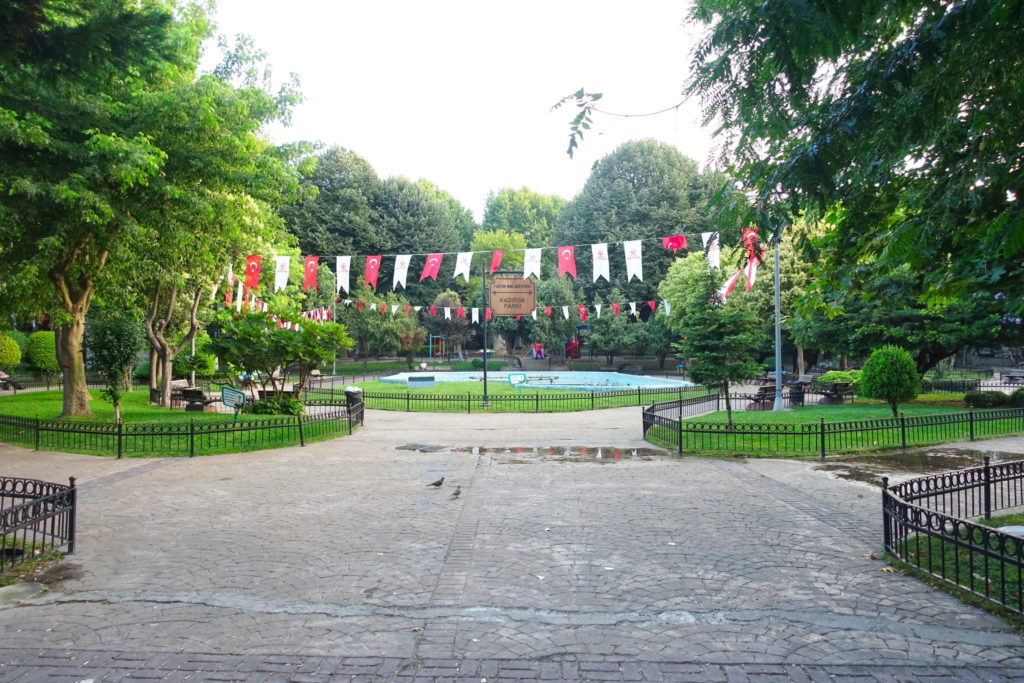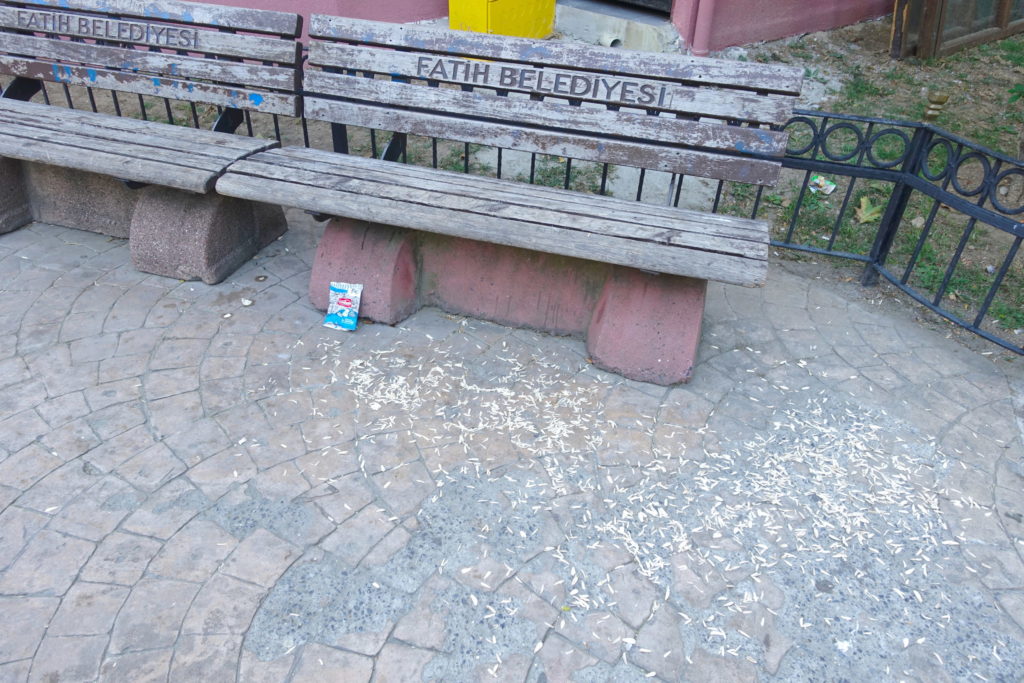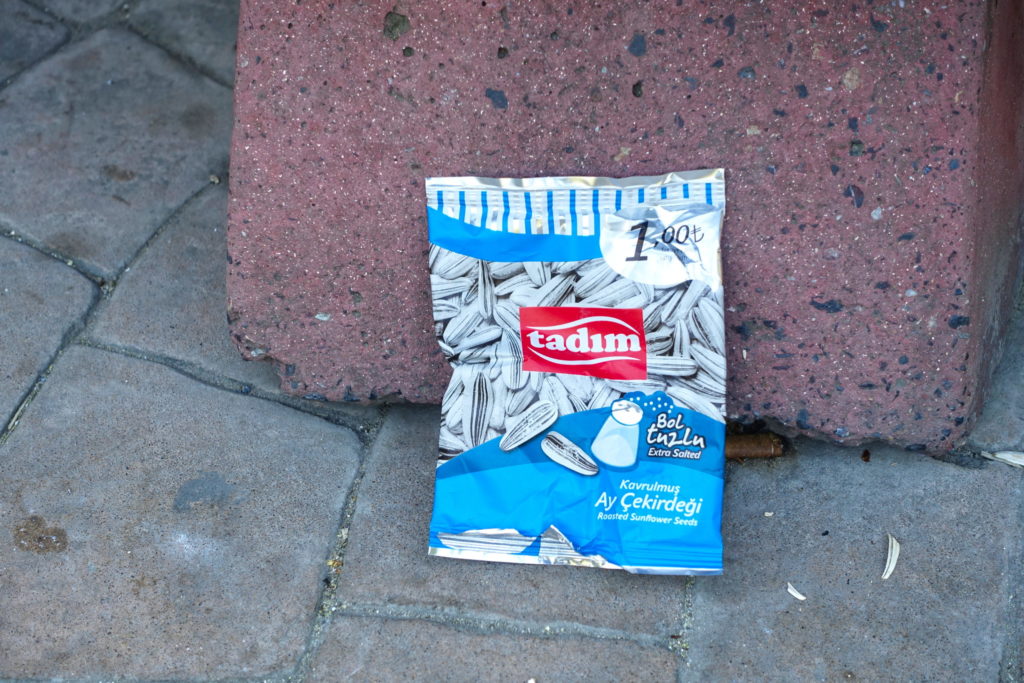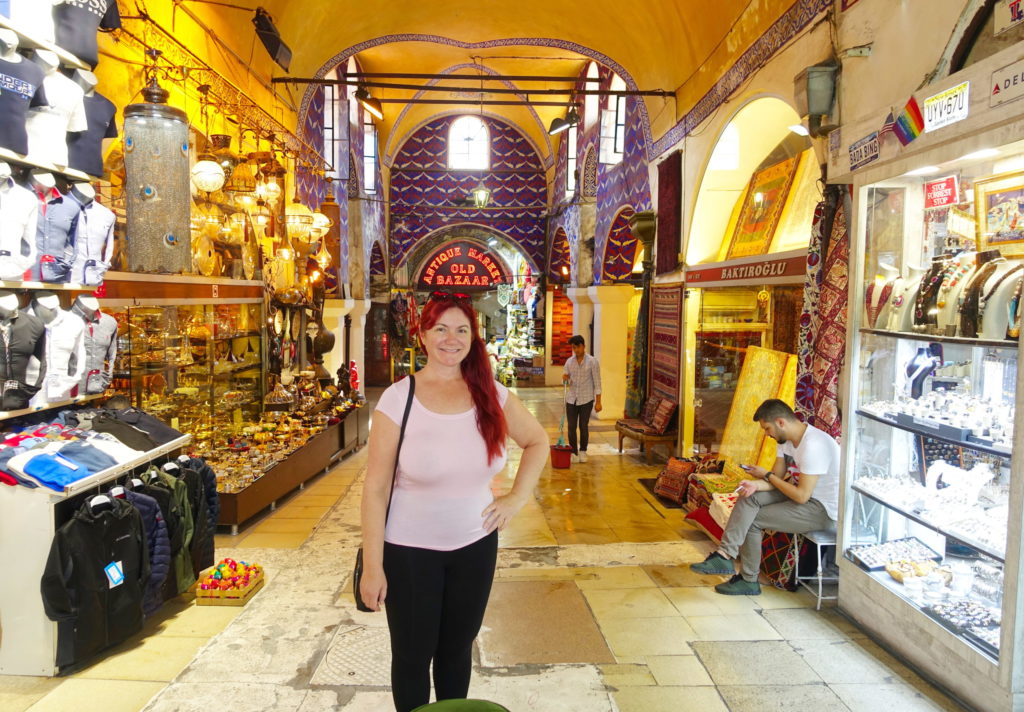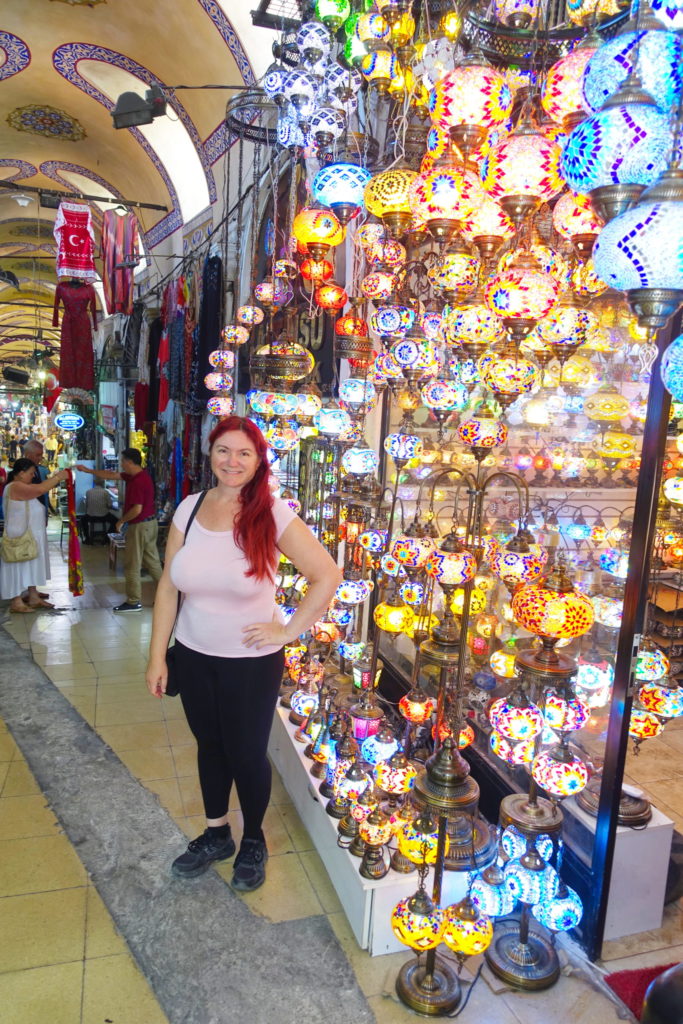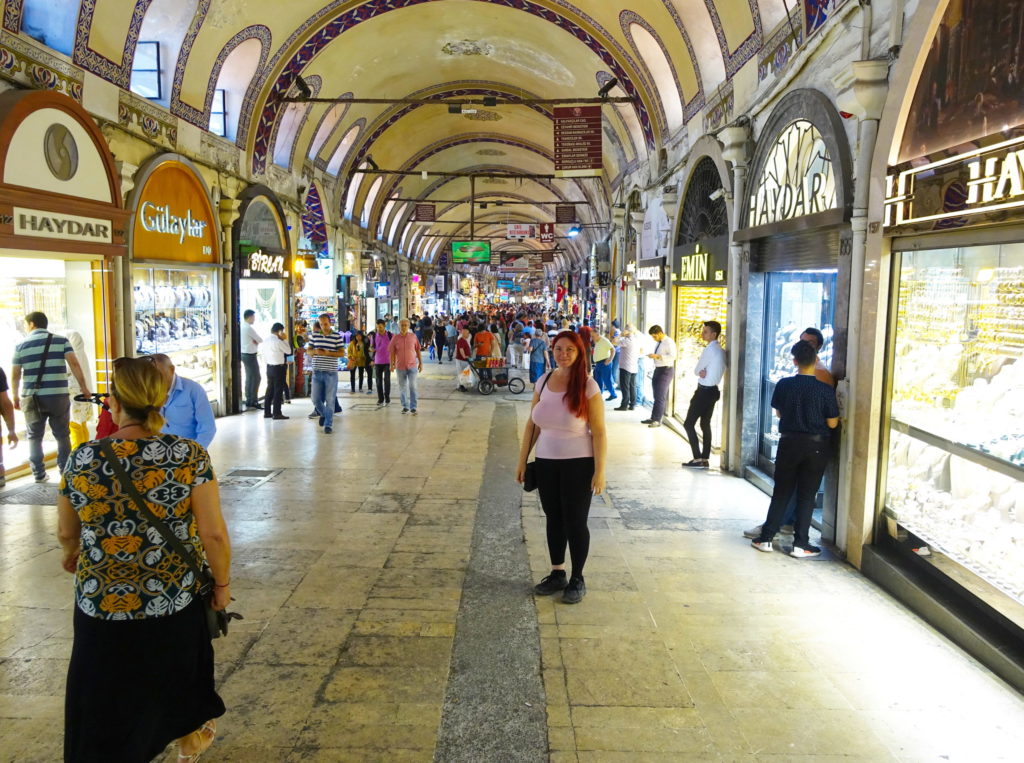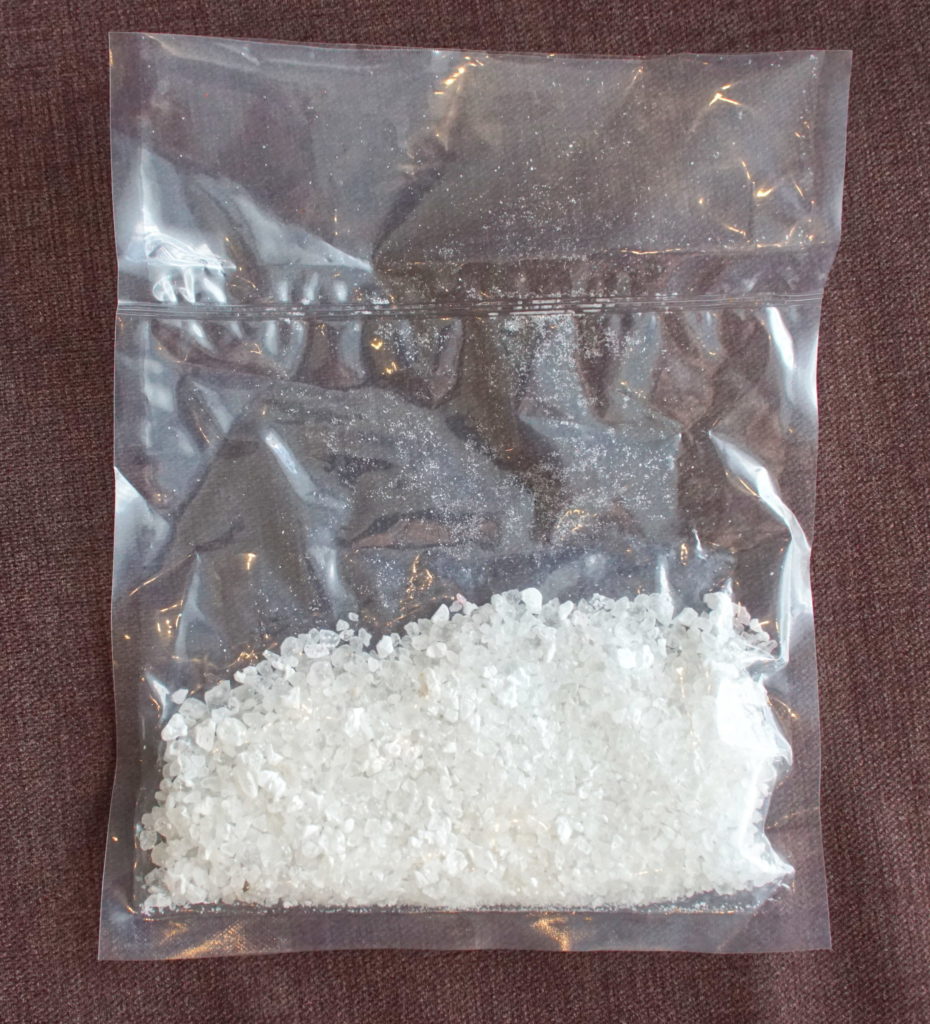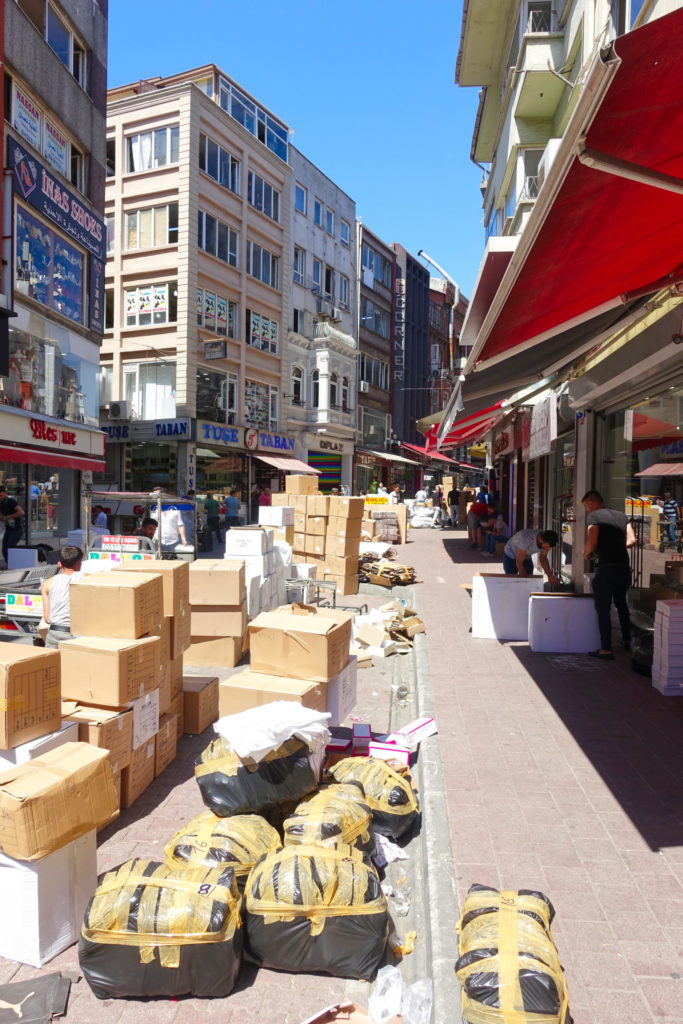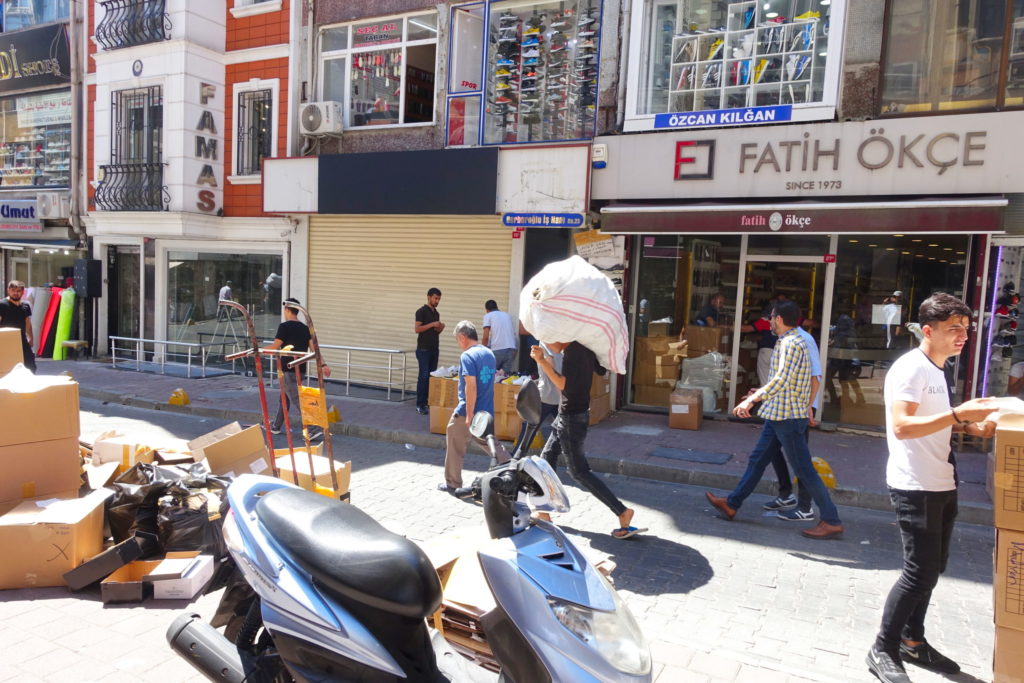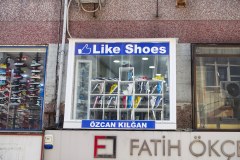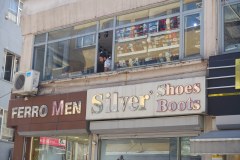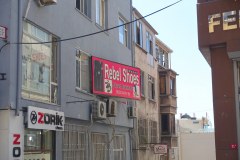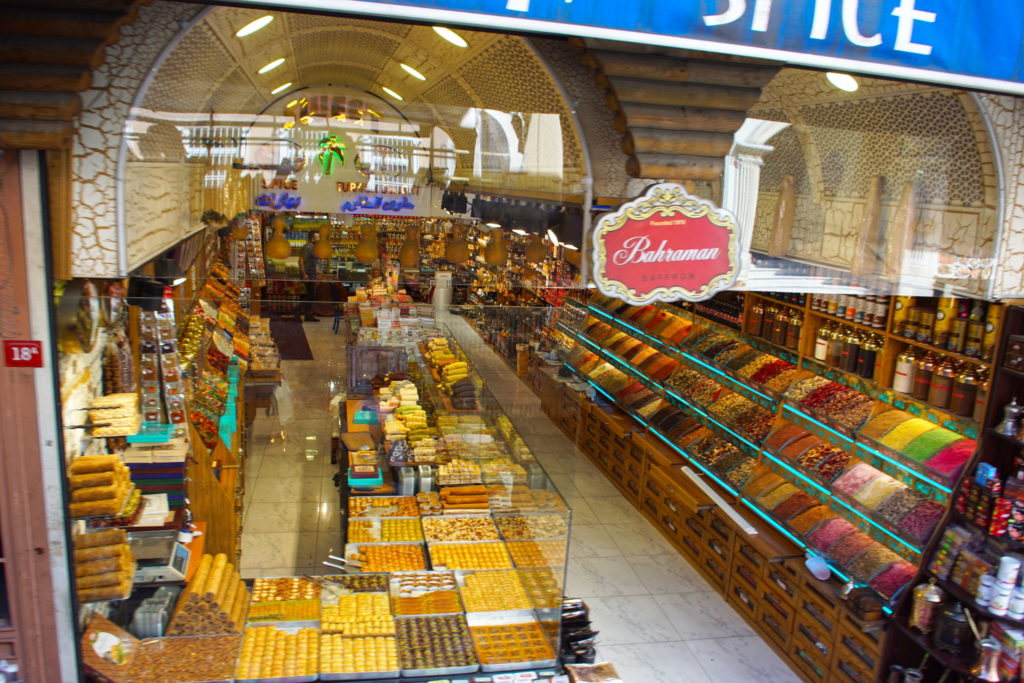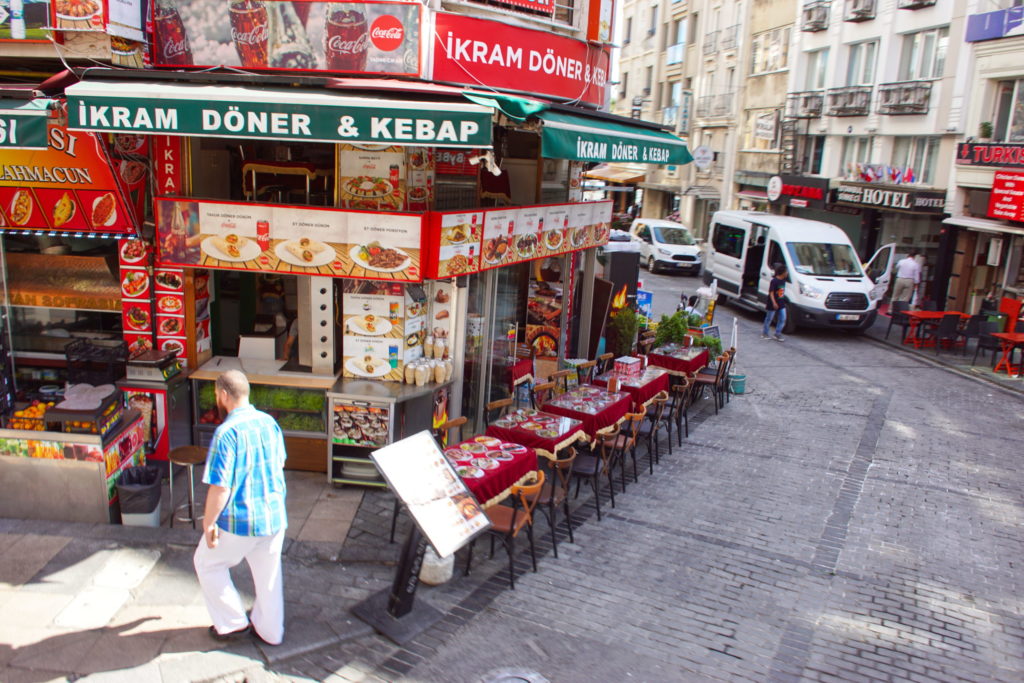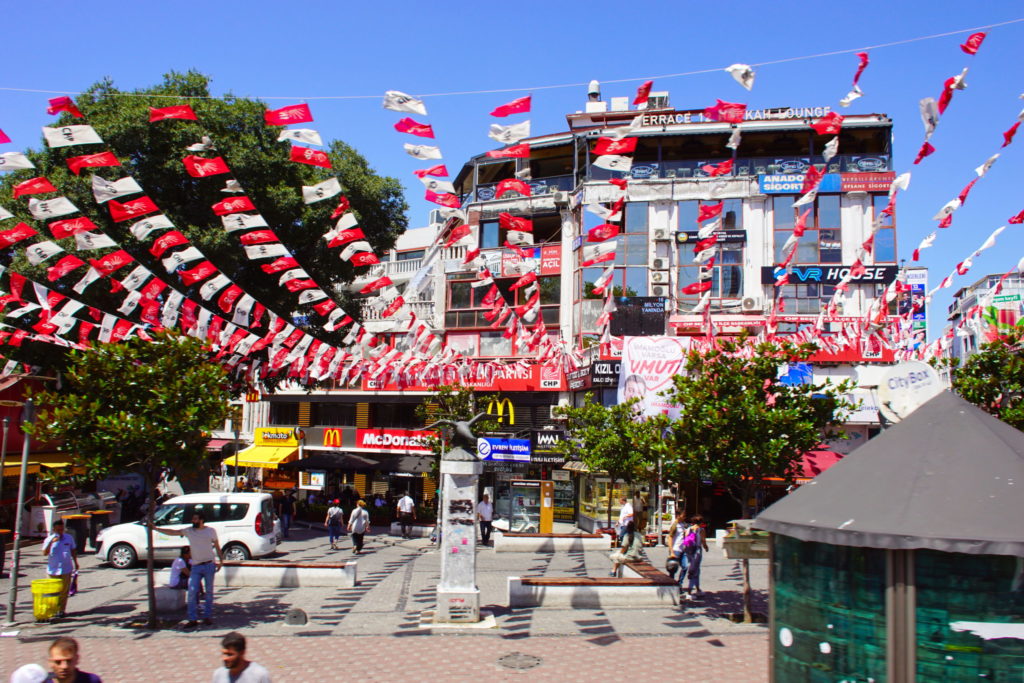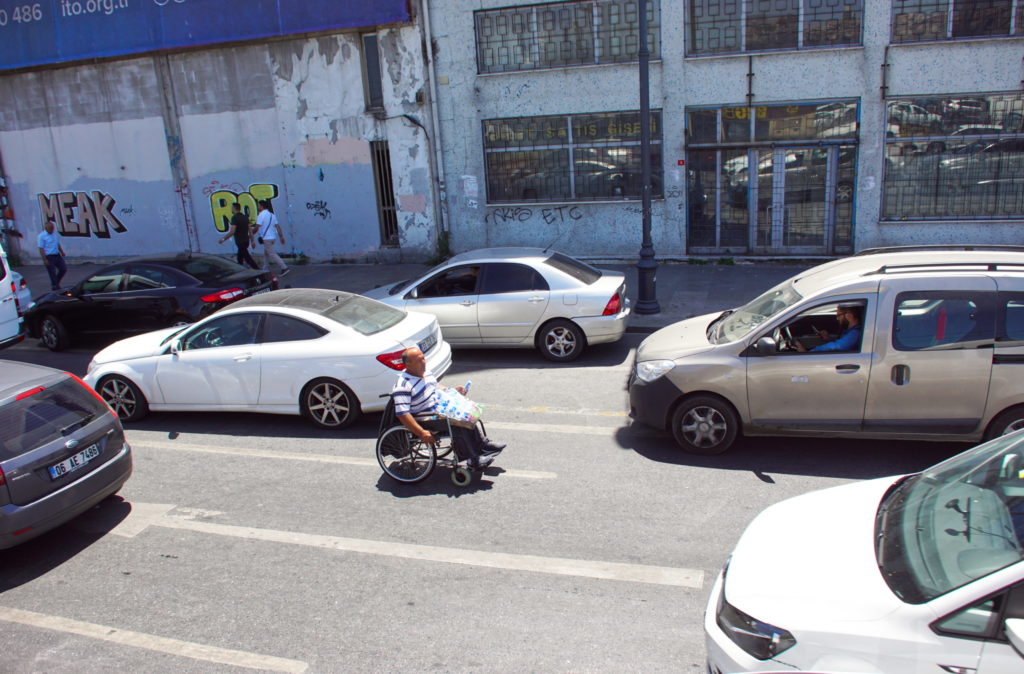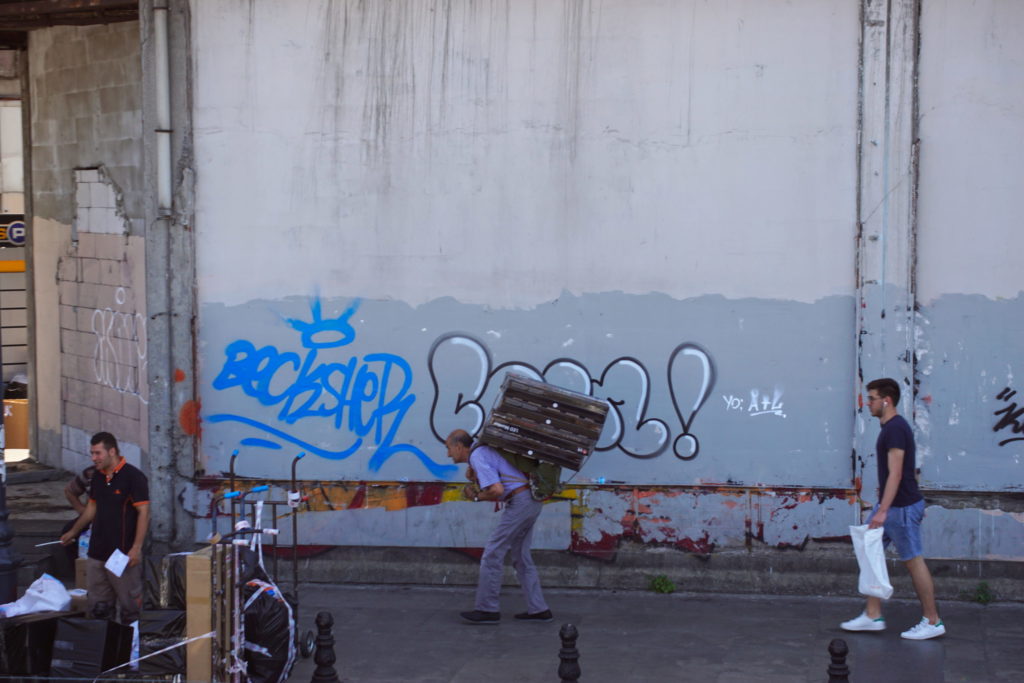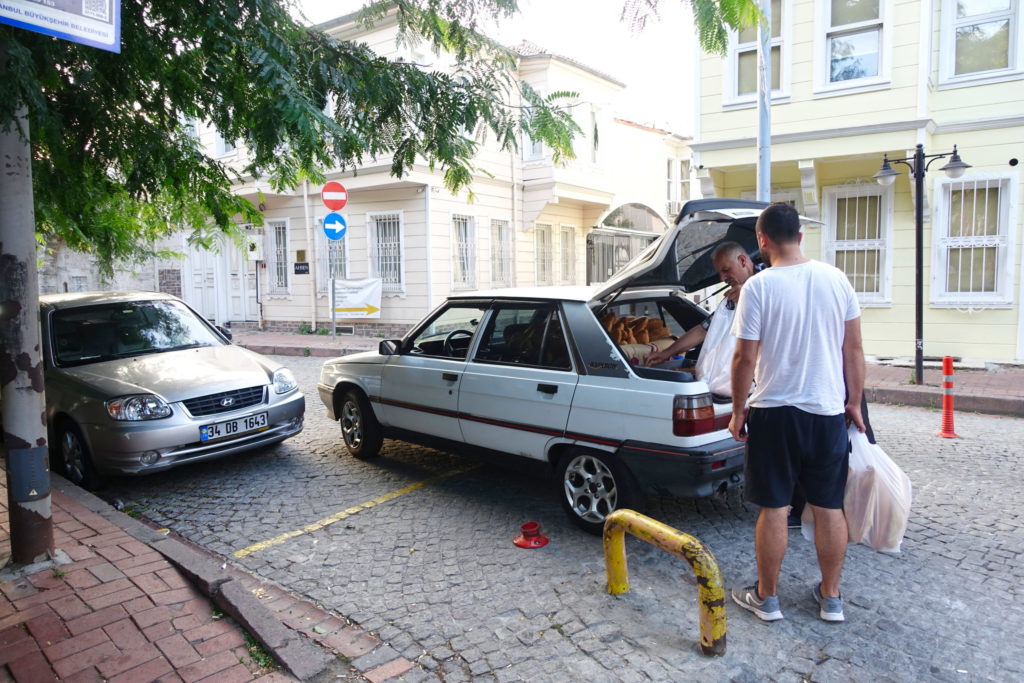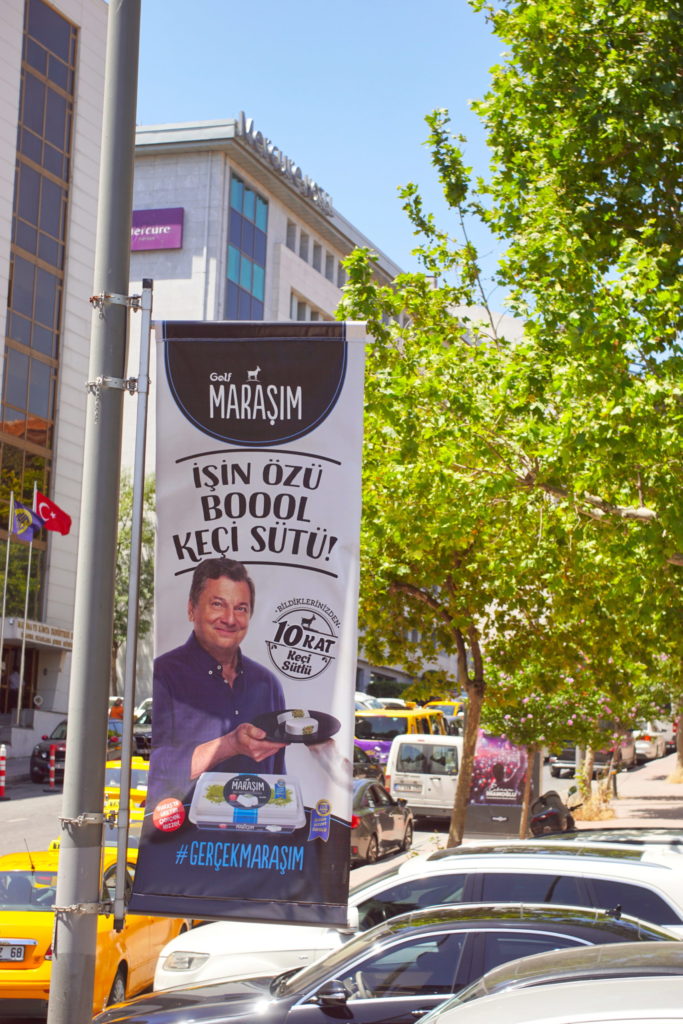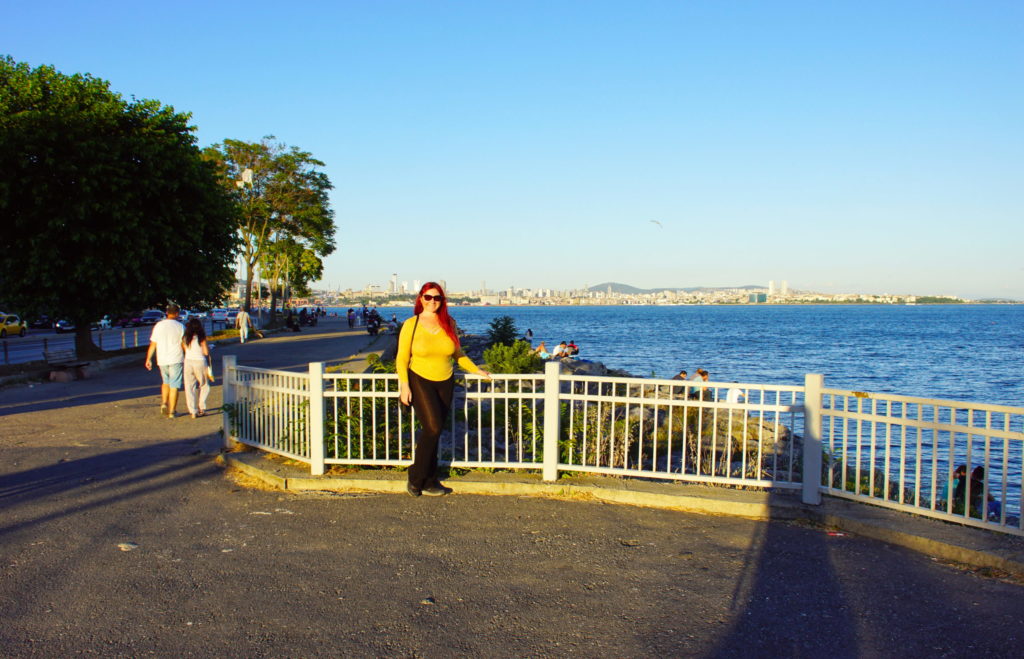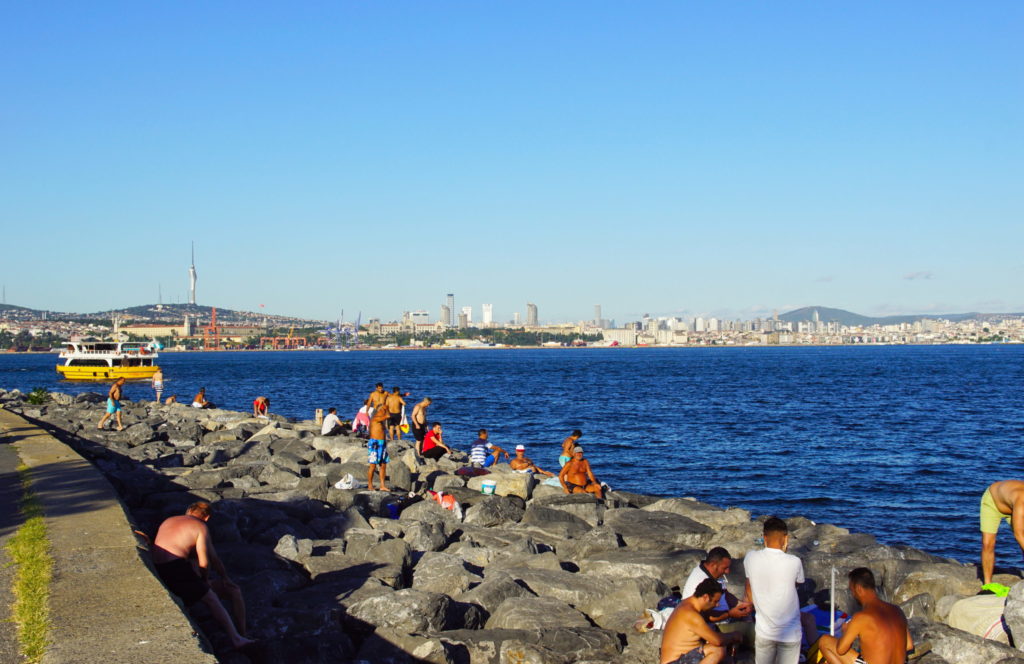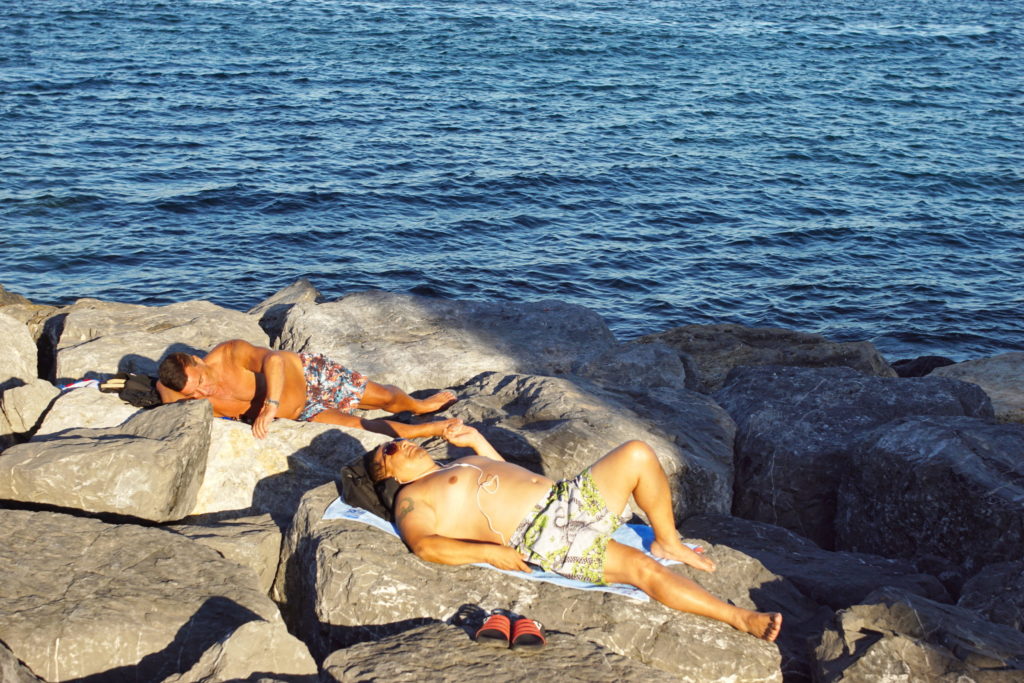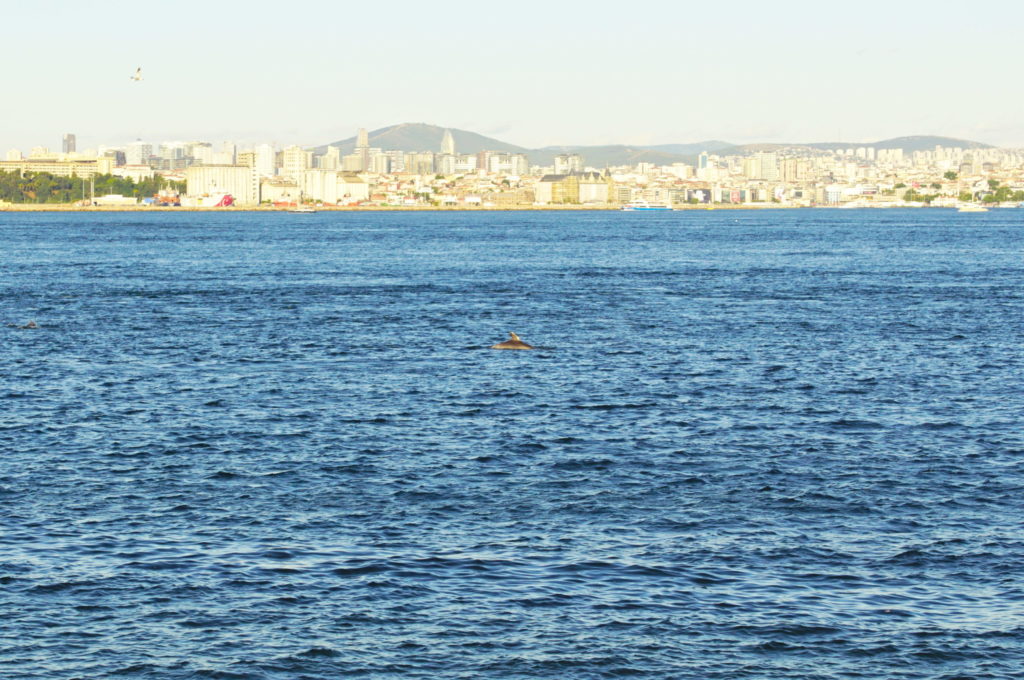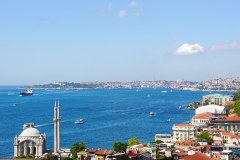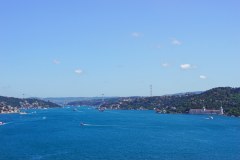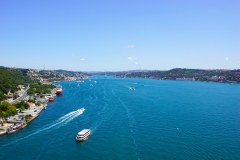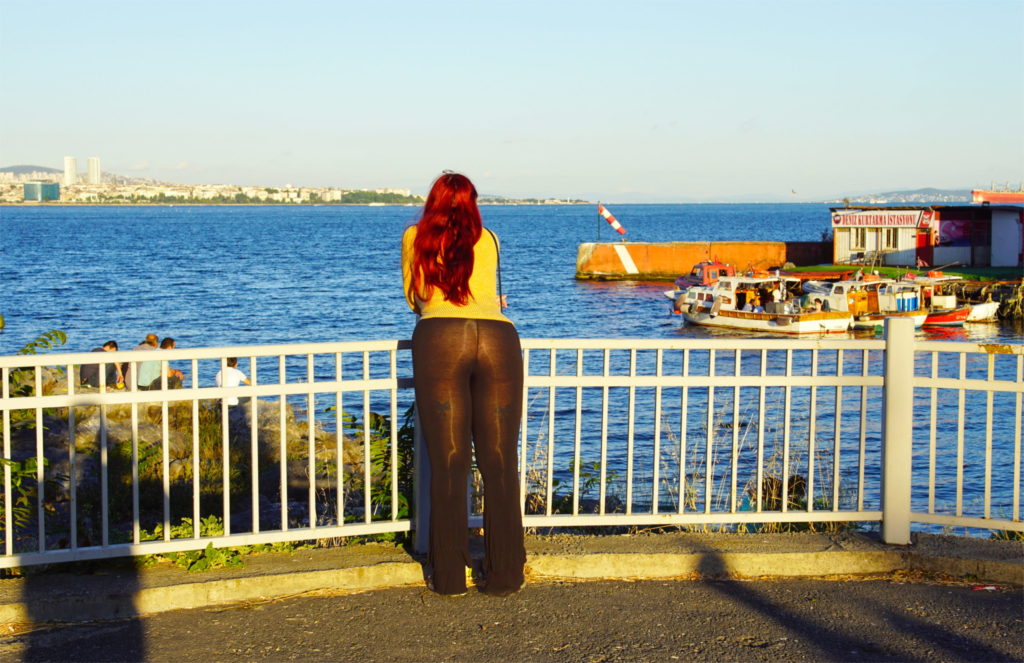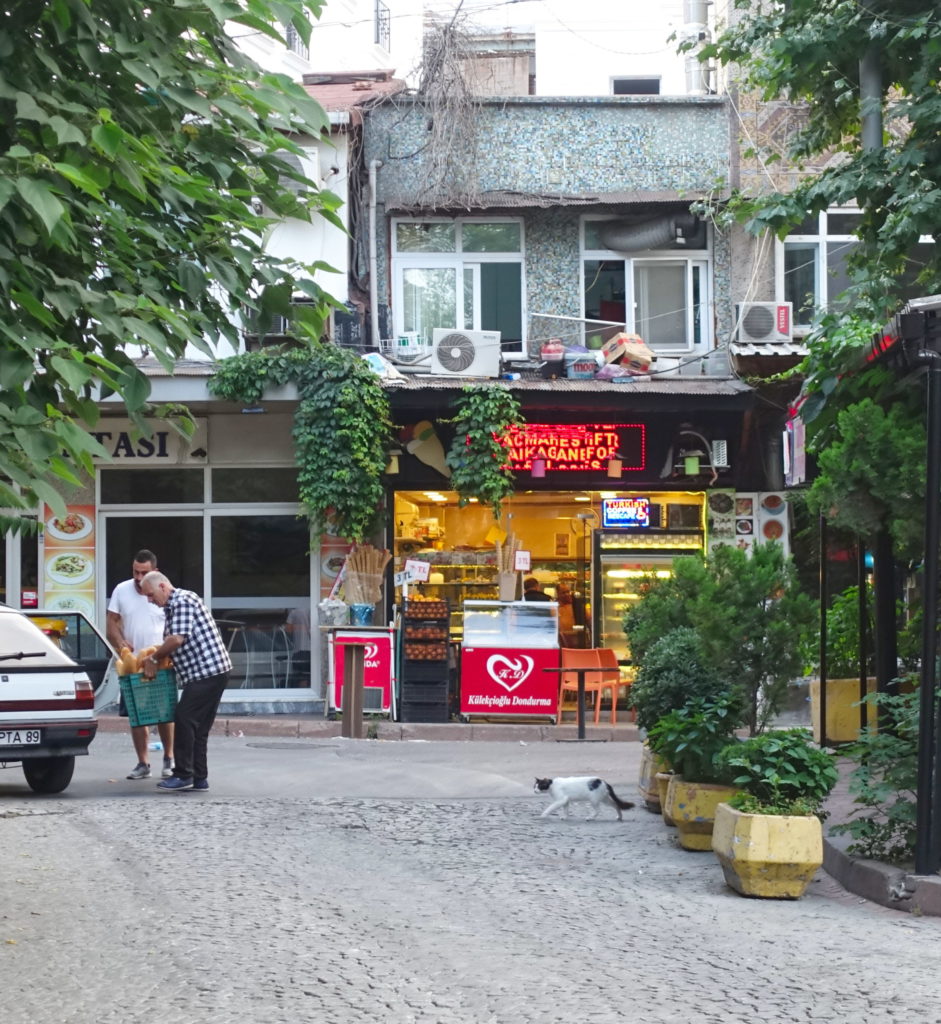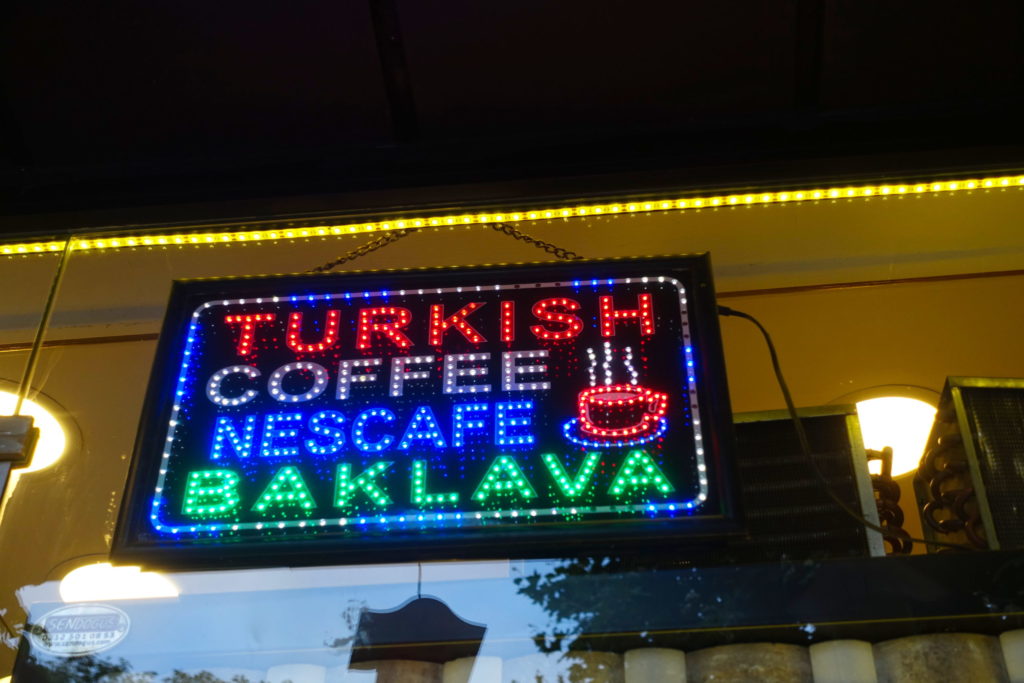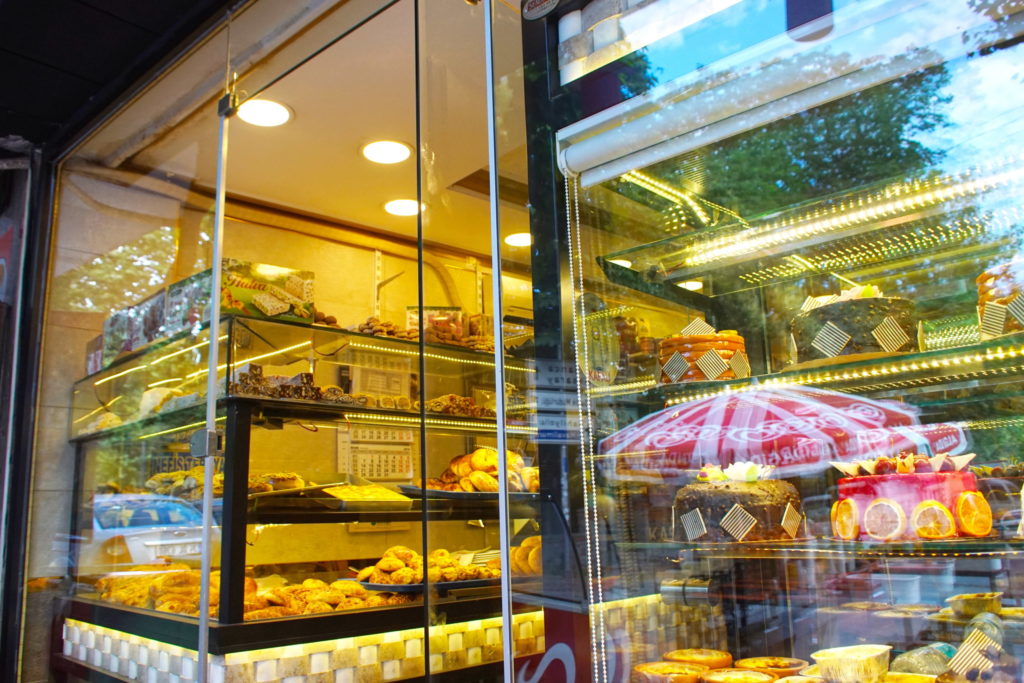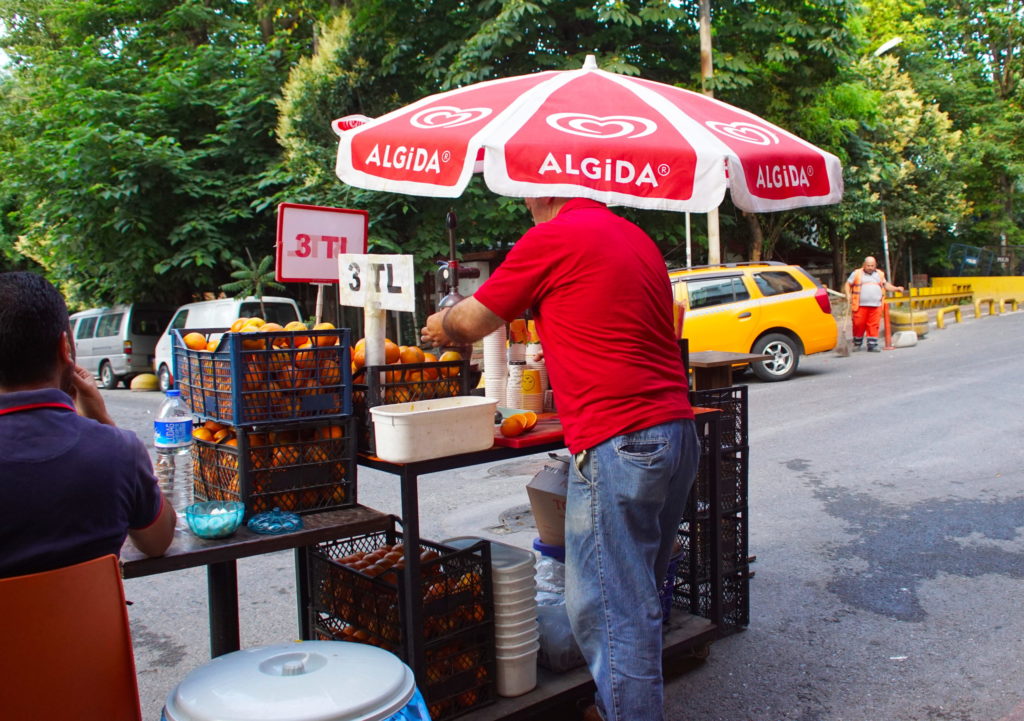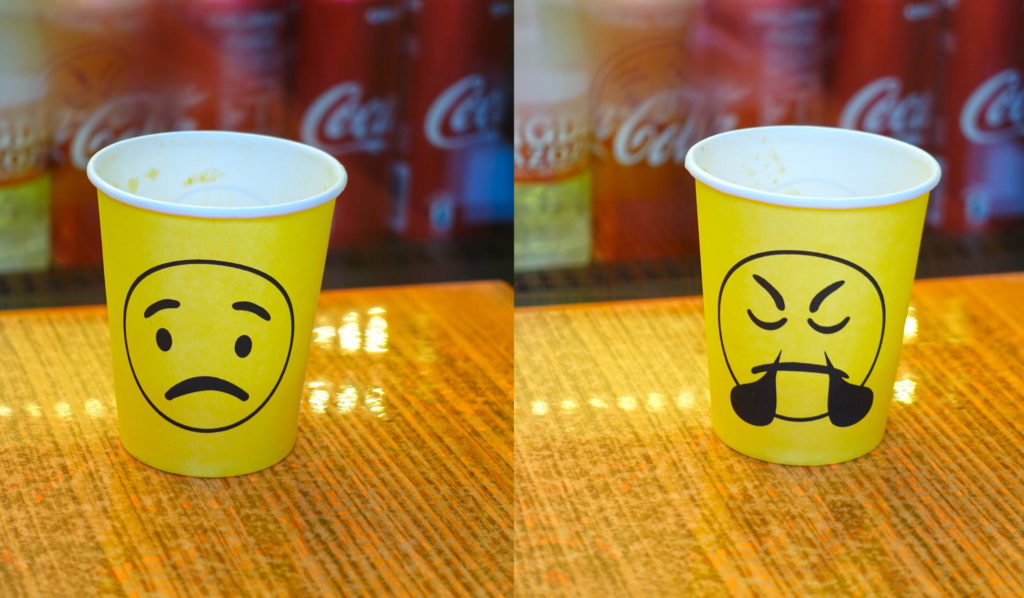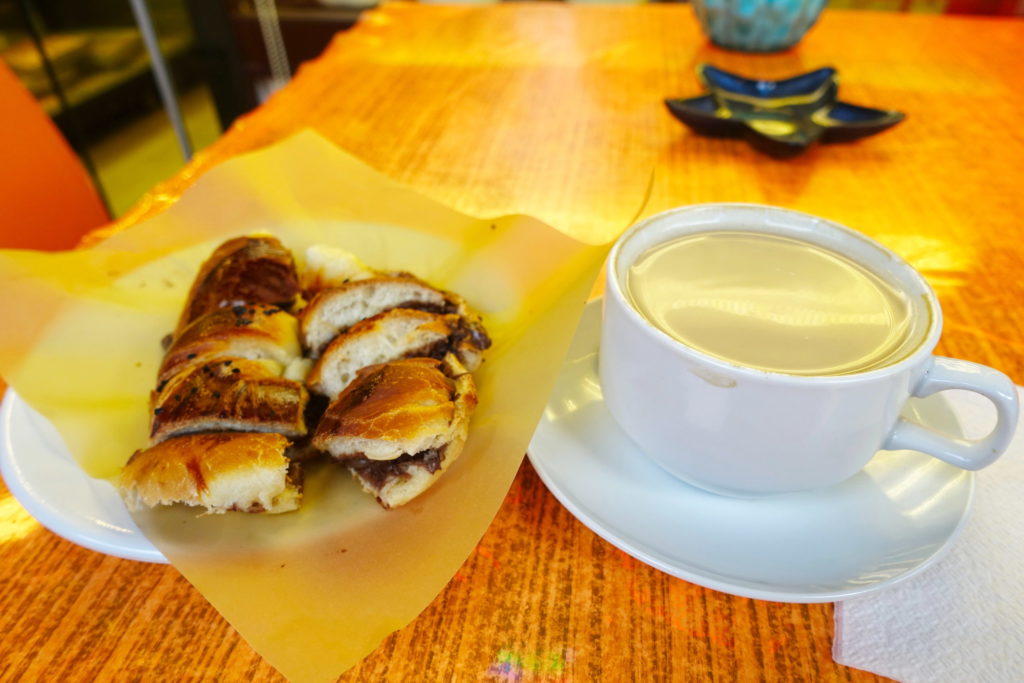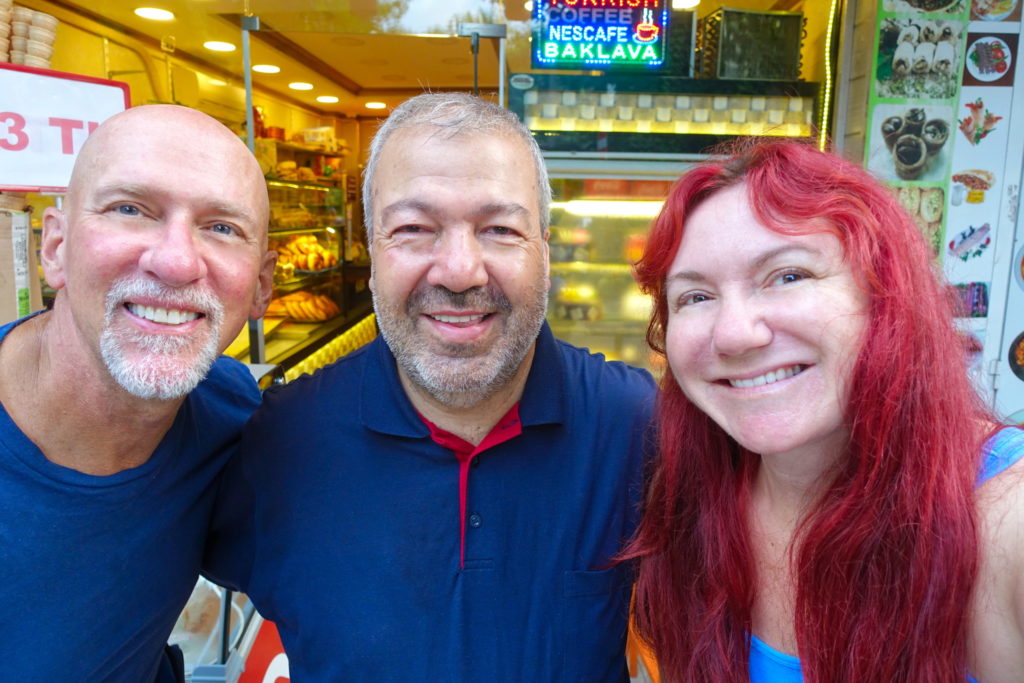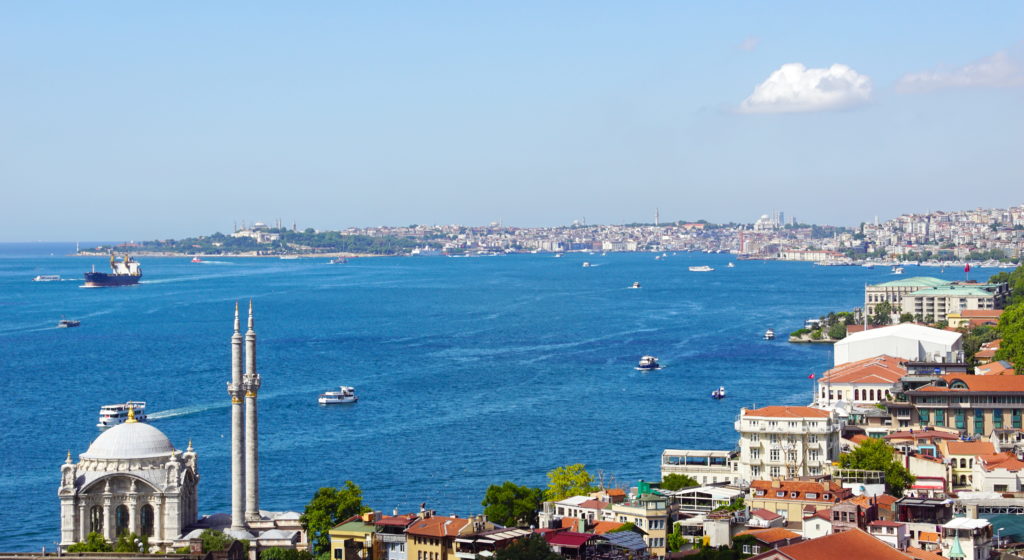Byzantium, later named Constantinople, and finally named “to the city”, pronounced “İstanbul“, is a city co-existing in both Europe and Asia. Its urban area is almost 1,000 square miles in size and it is home to more than 15,000,000 residents, plus more than 12,000,000 foreign visitors annually. And this year, two of those foreign visitors are us.
İstanbul
How can we describe İstanbul? Like any great city, İstanbul is a mixture of everything. Old and new, large and small, colorful and drab. And everyone is friendly. In fact, everyone we encounter in our adventures in Turkey is friendly. We will talk about the people of İstanbul, but first, let’s look at some of the less-common sights of this city. Following are photographs of different things that catch our eye as we wander the neighborhoods.
We are staying in the Fatih section of İstanbul, near the Çatladıkapı Alt Geçıdı. Fatih is very near many important historical landmarks (which we will visit in the next edition of this magazine). According to the internet, Fatih is considered “conservative”, although we don’t know what that implies. It looks like a pretty normal place to us.
This is the Airbnb where we are staying. We discover it’s on a quiet street (relative to the rest of the city). İstanbul is a boisterous place, and although the sounds of vehicles engines and horns permeate the day and night, the house shields us from the worst of it.
The streets are clean and there is a quiet dignity to the mosques in İstanbul. And if you are inclined, you can enjoy some hoops after a quiet meditation.
These types of things always catch our eye and we comment to ourselves, “Maybe they don’t know what it means.”
On a residential street, full of cars and people, we see a building that is falling apart. İstanbul is full of people. You’d think that someone would rebuild this house and live in it or, at least, rent it to visitors. It’s a mystery.
The area immediately surrounding İstanbul has large areas of greenery and powerful vistas. In the distance is the Bosphorus Bridge, connecting Europe and Asia.
On the Asian side of İstanbul is the Galata Tower, named for the community in which is stands. It was originally build in 1348 by the Genoese when they were establishing a colony in İstanbul, for some reason.
There are almost 3,000 mosques in İstanbul. Most are subtle, hidden in neighborhoods. This one looks like it belongs in Star Wars.
Turkish, when written in Latin alphabet, is fairly easy to decipher. We are not sure why there are two people who appear to be praying in the toilets, but we appreciate how they indicate the both males and females are welcome to pray.
We think this is funny. According to Google Translate,”Alkol dostunuz değildir” translates to “Alcohol is not your friend.”
We find a synagogue, specifically Neve Şalom, but they won’t let us in without a passport, which we are not carrying. It seems there are folks who ruin it for the rest of us all over the world, and this synagogue has its detractors. Min sallaf es-sabt lāqā el-ḥadd qiddāmūh.
Near our house in Fatih are brightly painted stairs, which might be the famous Rainbow Stairway of Fatih. We point this out only because a Google search of said stairways indicates there are more than one in this city, and they do not all have the same quiet beauty.
The People of İstanbul
What are the people like in this mysterious place? The word that comes to mind is “friendly”. Everyone we meet is smiling and welcoming.
Before coming to Turkey, we had been exposed to media propaganda regarding our Turkish friends’ ideas about modesty. False. While the women of İstanbul (mostly) wear hijābs and tend to cover their arms and legs in public, they are very tolerant of other cultures’ styles of dress.
On our first night in İstanbul, we hear loud music and follow the sounds. There is a small street party with dancing. The men and women dance separately, but a similar dance to the same music. And, like everywhere, folks with mobile phones record the festivities.
For most of the social activities we encounter, men and women are segregated. Typically, the only time we see the sexes mixing are when it is obviously a family doing family things. So, we take a photograph of this moment, even if the folks do not look Turkish (no hijāb on the women and short pants on the man).
At a park, we find families and friends enjoying the summer’s day. People sit on blankets and in lawn chairs, and a hammock is stretched between two trees. Children play while the adults sit around eating and talking.
Young women arrange themselves on the grass to take a selfie. I hope they don’t get their clothes stained with grass.
This is one of the most revealing outfits we see on (what appear to be) Turkish women. Not only is she showing ankles, but her hair is untamed. Probably drives the local men crazy with desire. ?
We see two men having a quiet dinner together, and I raise my camera to take a photograph. Being Turkish, they smile and wave, showing me their delicious repast.
We photograph this advertisement because we see exactly zero women with hair anywhere approaching this style or overt sensuality. Perhaps in the privacy of their homes, the hijāb comes off and a wild mane of hair is shaken into perfection Hollywood-style, but we will never know. 🙂
Kadırga Parkı
Kadırga Parkı is a small park near the house we are renting. The fountain is never turned on, but it is well maintained and always quiet.
This photograph is taken very early in the morning, but typically, this park is full of people, most of whom are sitting on benches, eating and talking.
Our wanderings through this park help us solve a mystery, common throughout İstanbul. Everywhere we walk in this city, we see scatterings of white shells. There are men who sweep them into the trash daily, and the shells reappear the next day.
It is in Kadırga Park that we finally solve the mystery. People sit on benches eating bags and bags of kavrulmus ay çekirdeği, spitting out the shells on the ground. It happens all over İstanbul (that we can see). Fortunately, some distracted soul carelessly discarded the bag on the ground near the discarded seeds, and we are able to solve this riddle.
Bazaar
When you think “Turkey”, you think “bazaar”, so let’s visit the famous Grand Bazaar of İstanbul.
The Grand Bazaar is one of the largest and oldest covered markets in the world, with 61 covered streets and over 4,000 shops, attracting between 250,000 and 400,000 visitors daily. In 2014, it was listed No.1 among the world’s most-visited tourist attractions with 91,250,000 annual visitors. The Grand Bazaar at İstanbul is often regarded as one of the first shopping malls of the world.
Just because something is sold in a bazaar does not mean it is cheap. They sell everything here, from trinkets to jewelry and high-end leather products. Notice the shop on the right, selling Americana. Notice, too, the shopkeeper smoking; there are “No smoking” signs here, but they do not seem to be enforced.
We wander the 61 streets, and the endless shops and products start to blend together. There are many shops where we think, “I’ve never even seen one of these, yet this fellow sells enough to make a living.” There are other shops selling common items such as tee-shirts and socks. You are supposed to haggle over the price of goods, but do people really haggle over a tee-shirt?
We do, in fact, make a few purchases, just to say we’ve haggled at the Grand Bazaar. Our neighbor, who is Turkish, told us how to do it. They make an offer, and you act as if it is way too high. You can’t even consider it. They tell you how good the product is, and you agree, but ask for a price much lower. They lower it slightly, but you still are not interested at that price. After a while, you realize that they will never meet your offer, and you leave the shop. They will call after you, asking you to come back. At that time, they will probably make their best offer.
It’s sounds a bit harsh, but it is just the game they play. We want to purchase a very fine silk scarf. The shopkeeper starts high and I start low. “I need to feed my family!” he tells me. I just smile and shrug. So he lowers the price a bit and I raise my offer a bit. Eventually he says, “$30”. We counter with “$20”. He says, “Okay, 20” and extends his hand. As I am about to shake his hand, he adds with a smile, “5”. I smile and withdraw my hand, and he says, “Okay, just 20.” I purchase a Mont Blanc wallet for 1/10th the price of a Mont Blanc wallet (yeah, think about that), and shopkeeper guarantees it for 10 years. I say, “Okay, if this wears out in less than 10 years, I’m going to buy an airline ticket to İstanbul, come to the bazaar and find you, and ask for my money back.” He smiles and says, “Okay, I will be here.”
Yup, just a game. Did we pay a fair price? We don’t care; it was the fun of doing as the Turks do.
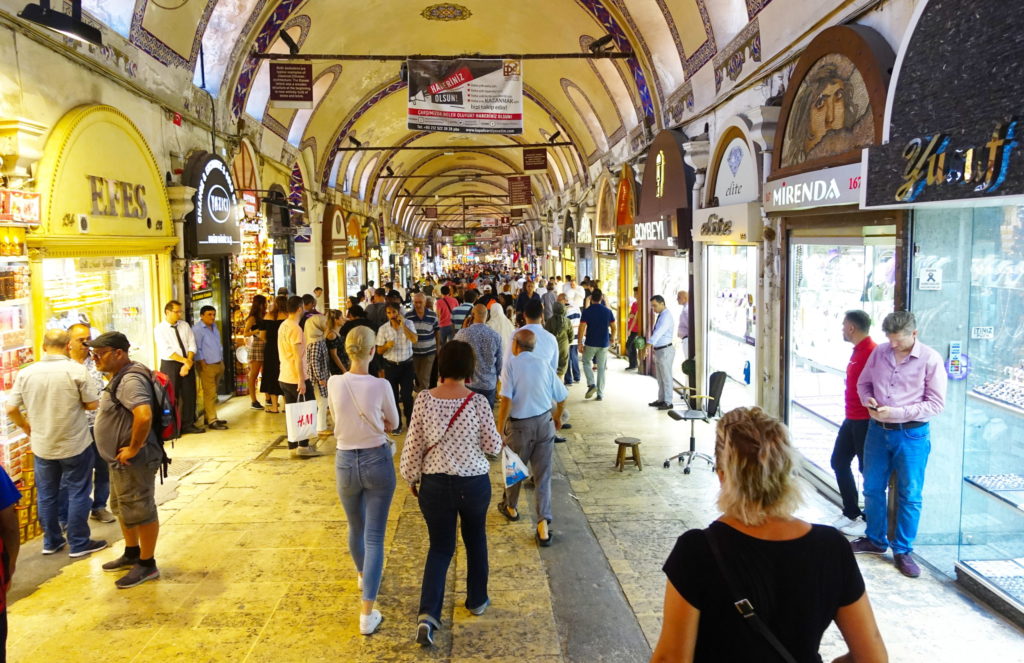
Shops full of watches and jewelry. We wonder what the total value of goods are in these 4,000 shops.
We discover that our credit card does not work in most places at the bazaar (and in a number of other places around town). The shopkeeper says the card was rejected, and a call to the credit card company informs us that they never received a request. Eventually we find out that there is an additional fee for the merchant to use US credit cards, so only those places that have a high number of US tourists will be set up to accept our credit cards. It’s a good thing ATMs accept our bank cards. 🙂
We visit a shop selling spices and are invited to sample a few. One that we enjoy is salt that has a natural lemon flavor. We purchase a small amount and they put it in bag that is sealed by having the air sucked out. I’ve never seen crystal meth except on TV, but damn, it feels like I need to hide this stuff! (Spoiler alert: although our luggage is searched when entering the USA, they do not discover our stash. 🙄 )
Commerce in İstanbul
İstanbul is an old, crowded city that was not designed for modern ideas of commerce. Yet, the city thrives.
İstanbul has an unending stream of motorcycles, cars, and small trucks. Yet the merchants here take over the street as they prepare their goods to be shipped. It looks like chaos to us, but we’re sure it’s completely organized.
What are they shipping in these boxes and bags? Shoes. This whole street is lined with shoe stores, and many of the stores make and export those shoes. So why the guy carrying the large sack of shoes is wearing flimsy thong sandals shall remain a mystery.
We’ve included a few more photographs of shoe shops for you to enjoy.
This shop impresses us with its precision and attention to color and form. It makes us want to visit and sample each of the tasty wares. Unfortunately, we are in a bus when we take the photograph. 😐
This tiny shop selling döner and kebap is not only a catering service, but is slowly expanding its floor space to include the roadway. Even if the location of the dining options leaves something to be desired, you have to admire their moxie for asking customers to sit in the street while eating.
Somehow, McDonalds has made inroads into the farthest reaches of the most distant lands, and successfully competes with the home-cooked flavorful local foods. It’s a mystery to us, because we don’t eat fast-food in any time or place.
This entrepreneur bravely navigates the narrow spaces between moving vehicles, hoping to sell tissues and bottled water to those who suddenly realize they need just that. Notice the gentleman in the van as he engages his “smart” phone, indifferent to the dangers and workers of the roadway.
“Hey, I have four LED monitors to deliver across town!”
“I’ll do it.”
“But you’re 70 years old!”
“A trifling. Just strap them on my back.”
When you have a city of narrow, crowded streets, there is little room for proper deliver trucks. Thus, every morning, we see private vehicles, with little concern for sanitary conditions, delivering bread to shops in our neighborhood.
We see this sign all over İstanbul and take a photograph to remember. It is selling goat cheese, but the words are not clear. “işin özü boool keçi sütü!” translates to “The essence of boool goat milk.” But if we remove one of the o’s in boool, the translation changes to “The essence of the job is bool goat milk!” We suspect there is an inside joke here.
Bosphorus
The Bosphorus or Bosporus (Ancient Greek: Βόσπορος; Turkish: İstanbul Boğazı), also known as the Strait of İstanbul is a narrow, natural strait and an internationally significant waterway. It forms part of the continental boundary between Europe and Asia, and divides Turkey by separating Anatolia from Thrace. It is the world’s narrowest strait used for international navigation. The Bosphorus connects the Black Sea with the Sea of Marmara, and, by extension via the Dardanelles, the Aegean and Mediterranean seas.

The southbound flow is 16 000 m3/s (fresh water at surface) and the northbound flow is 11 000 m3/s (salt water near bottom).
It’s interesting that İstanbul considered itself one city, given that the first bridge was built in 1973. Until then, crossings where made only by ferry.
For miles along the Bosphorus is a scenic pathway. Considering the size of İstanbul, there are surprisingly few people taking advantage on this warm summer evening.
The rocks of protecting the shore are littered (if that’s the right word) with men. We frequently see gatherings of men with no women in sight. Where are all the women? We don’t ask.
Why aren’t they home? Why aren’t they reclining in a park on soft grass? Sorry, but this does not look comfortable.
Three different species of dolphin exist in İstanbul Strait; bottlenose dolphin (Tursiops truncatus), common dolphin (Delphinus delphis) and harbor porpoises (Phocoena phocoena). Based on the coloring and the shape of the fin, we guess this is a bottlenose dolphin.
We have a few more photographs of the Bosphorus to share.
The waters are blue in the evening sun, and there is a lot of activity along the shore. Small boats, protected by the deniz kurtarma istasyonu, take locals and tourists out to see the sights.
Breakfast in Fatih
We are not foodies and haven’t talked much about dining in İstanbul. In fact, the restaurants are very smoky (from cigarettes) and, if you eat outside, you have to deal with street noise. Most of the time, we prepare our own meals. However, breakfast is different because it’s quiet and calm early in the morning.
We find this bakery the first morning we are here. Yes, there is trash on the roof, but the place seems inviting.
It’s good to know that, in Turkey, we can get Turkish coffee. And Nescafe, for some reason.
The bread and pastries smell delicious, and we discover that they are made by the owner and family in the basement. You can’t get fresher than that.
We ask for pastries, coffee, and orange juice, and the owner cuts and squeezes oranges to ensure goodness. Notice the fellow in orange-ish pants; he is sweeping trash, including large quantities of kavrulmus ay çekirdeğ shells that are discarded on the streets daily.
The orange juice is served in these yellow cups. Do they have a meaning, or did someone order too many as a gag and didn’t want to throw them away?
And this became our morning ritual when in İstanbul. Everything is fresh and wonderful.
The owner of the bakery is a very decent fellow. Each morning, we notice a bag of bread near the orange juice machine and one day we discover what it’s for. An old woman, her back bend such that she cannot look forward, walks difficultly to the bakery. Without a word, the owner gives her the bag. She thanks him, and he returns to his work. And that’s how they take care of the needy in Turkey. 😀
İstanbul Not Constantinople
We were inspired to title this article not because of the song by The Four Lads, but rather by a sign in the Athens’ airport.
Did you ever consider how we decide what to call a place? The land that the French call Allemagne, the Polish call Niemcy, the Tahitians call Purutia, the Latvians call Vācija, and the Americans call Germany, the Germans themselves call Deutschland. We never gave it much thought, but it does seem strange that we all have different names for the same place.
Well, since 1923, İstanbul has been known as İstanbul. We knew it was once Constantinople, but it was an old name and things change.
Then, as we watch the electronic board in Athens announcing the arriving and departing flights, we see our flight displayed in English and in Greek, oscillating between “Istanbul” and “Κωνσταντινούπολη”. Yup, they decided to keep the original name. Well, good for them!
Interestingly, if you use Google Translate to translate Κωνσταντινούπολις and Κωνσταντινούπολη, you get very different results.
There is much more in İstanbul than the few sights we’ve shown here: mosques, palaces, churches, aqueducts, and cisterns, to name a few. We will return next time to share the magnificence of monumental İstanbul!

